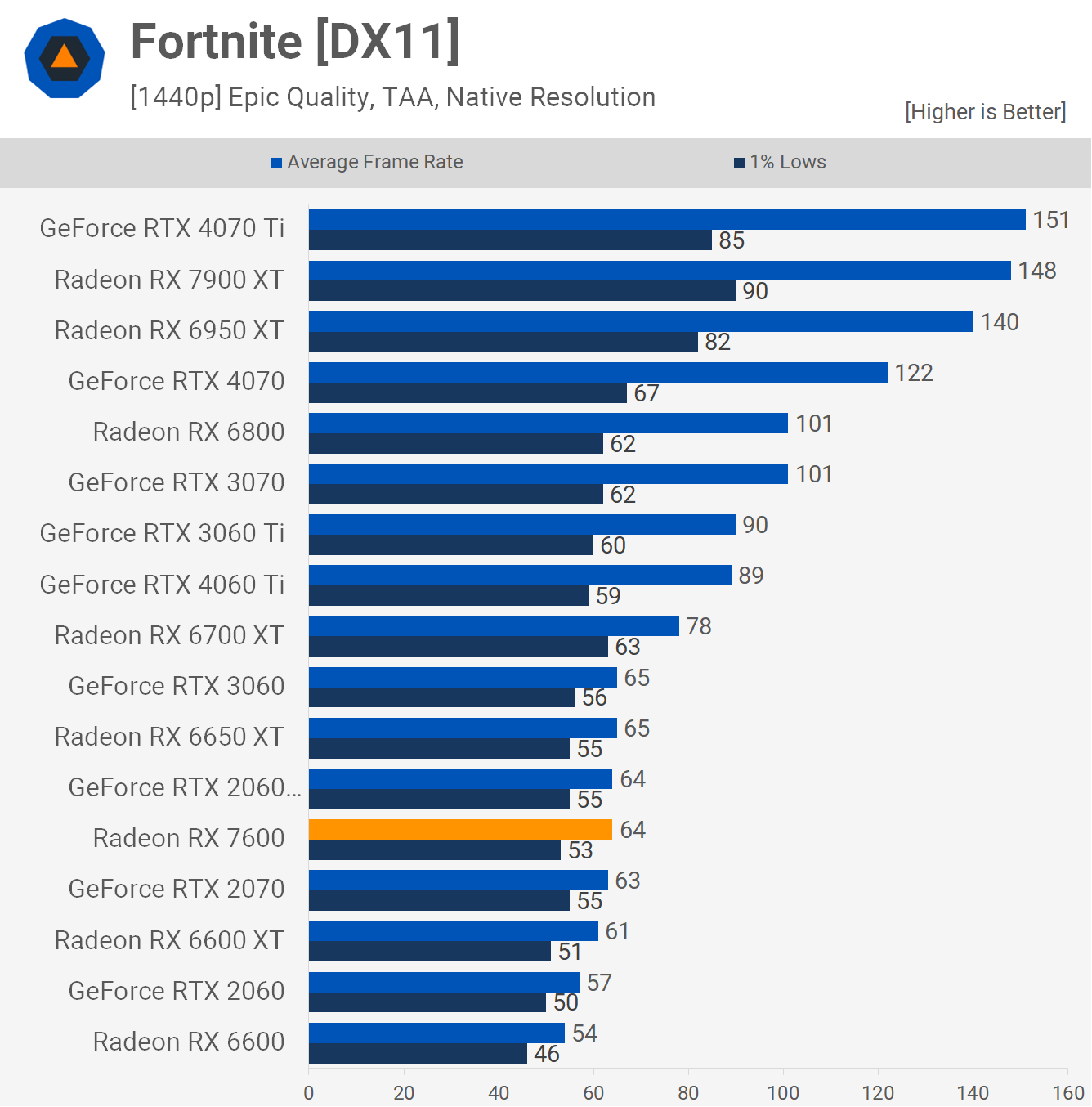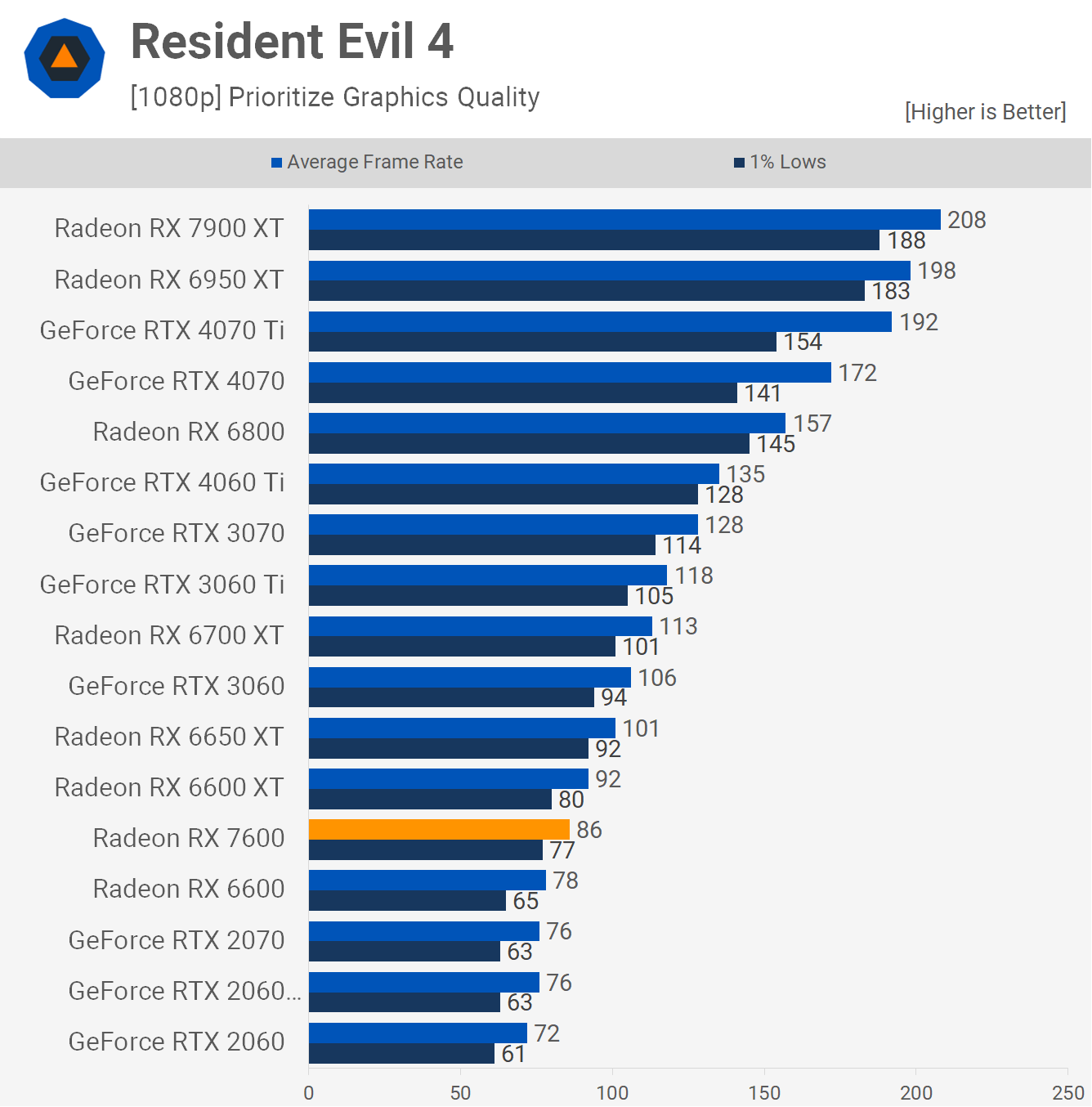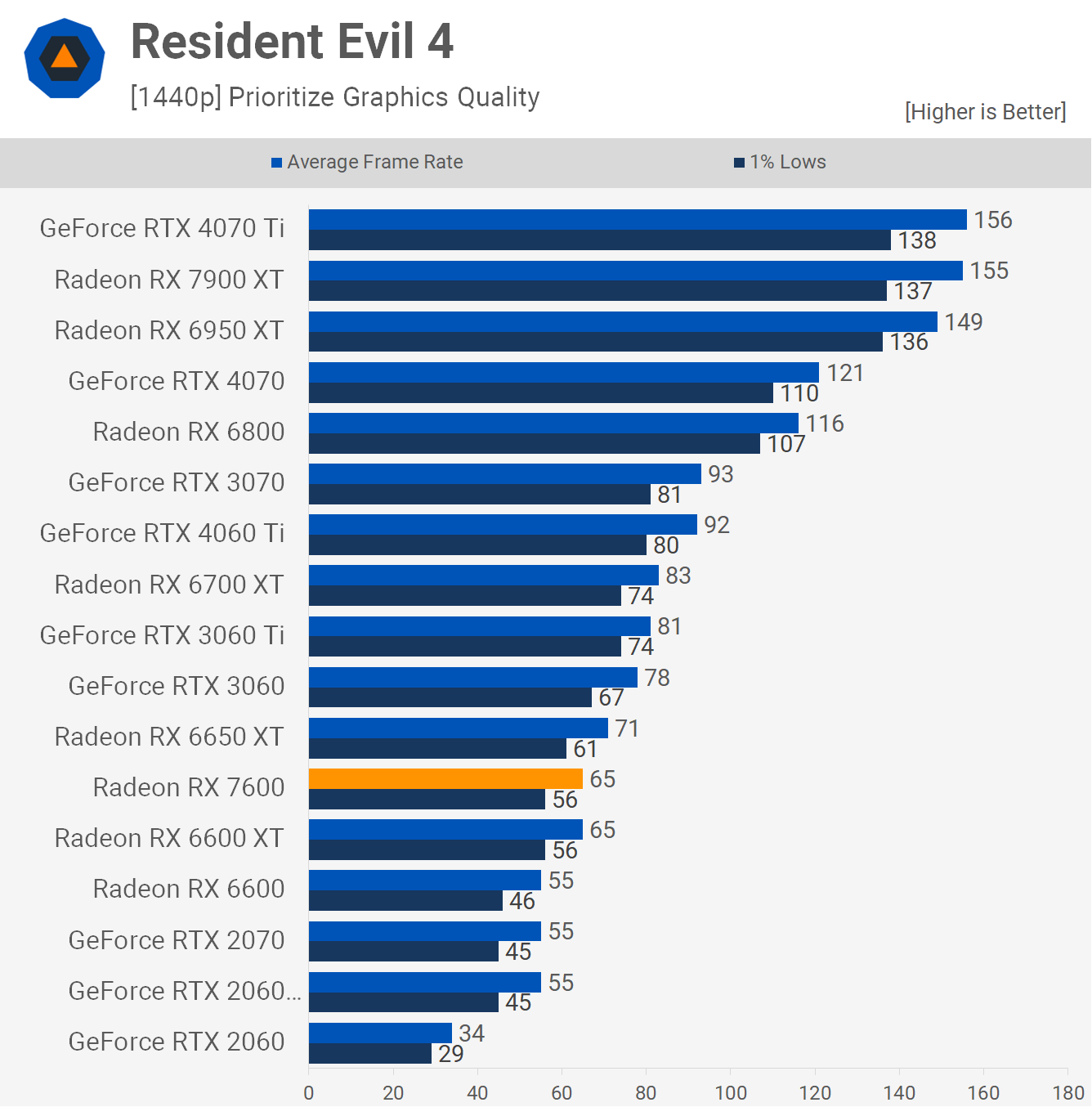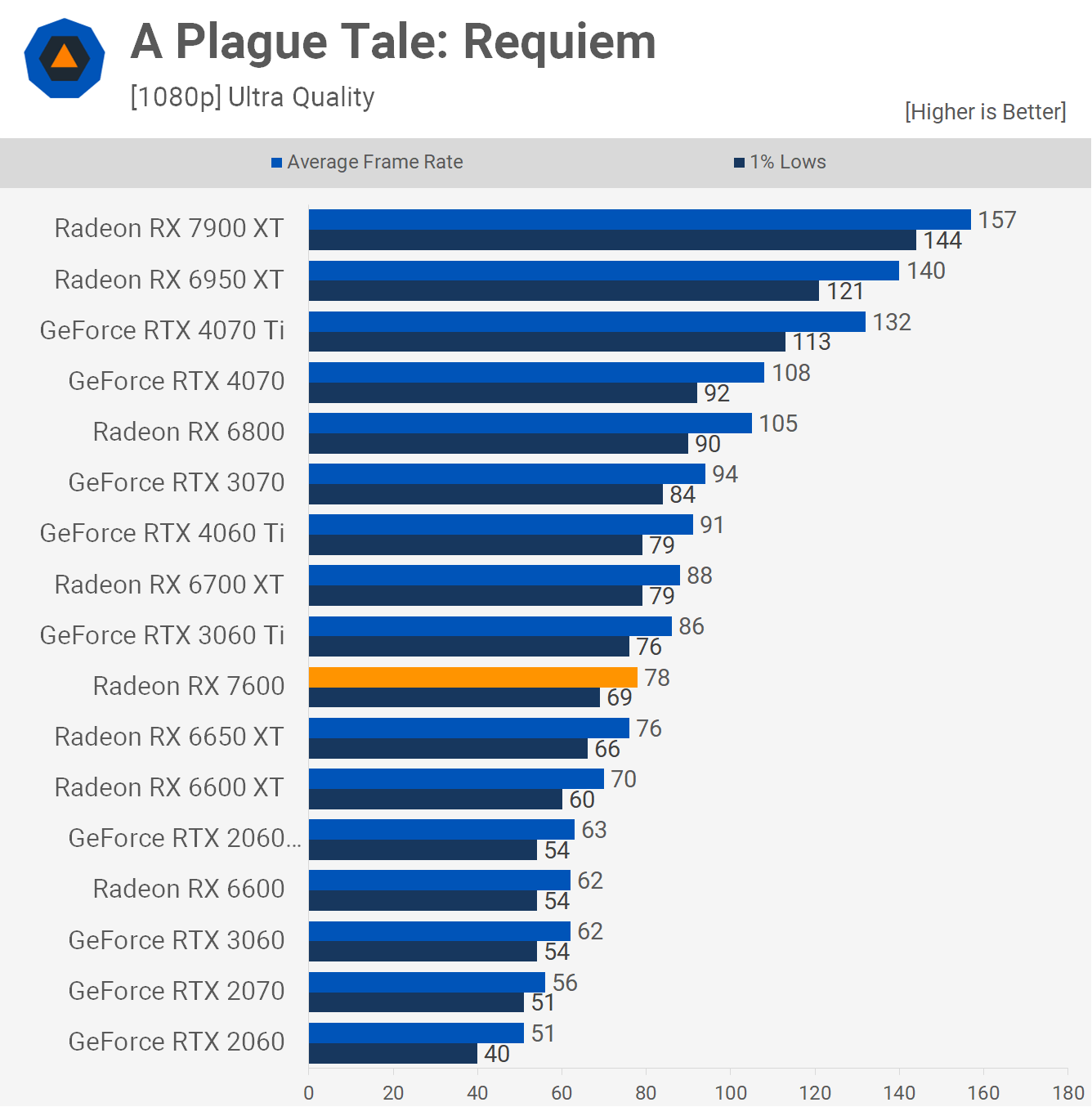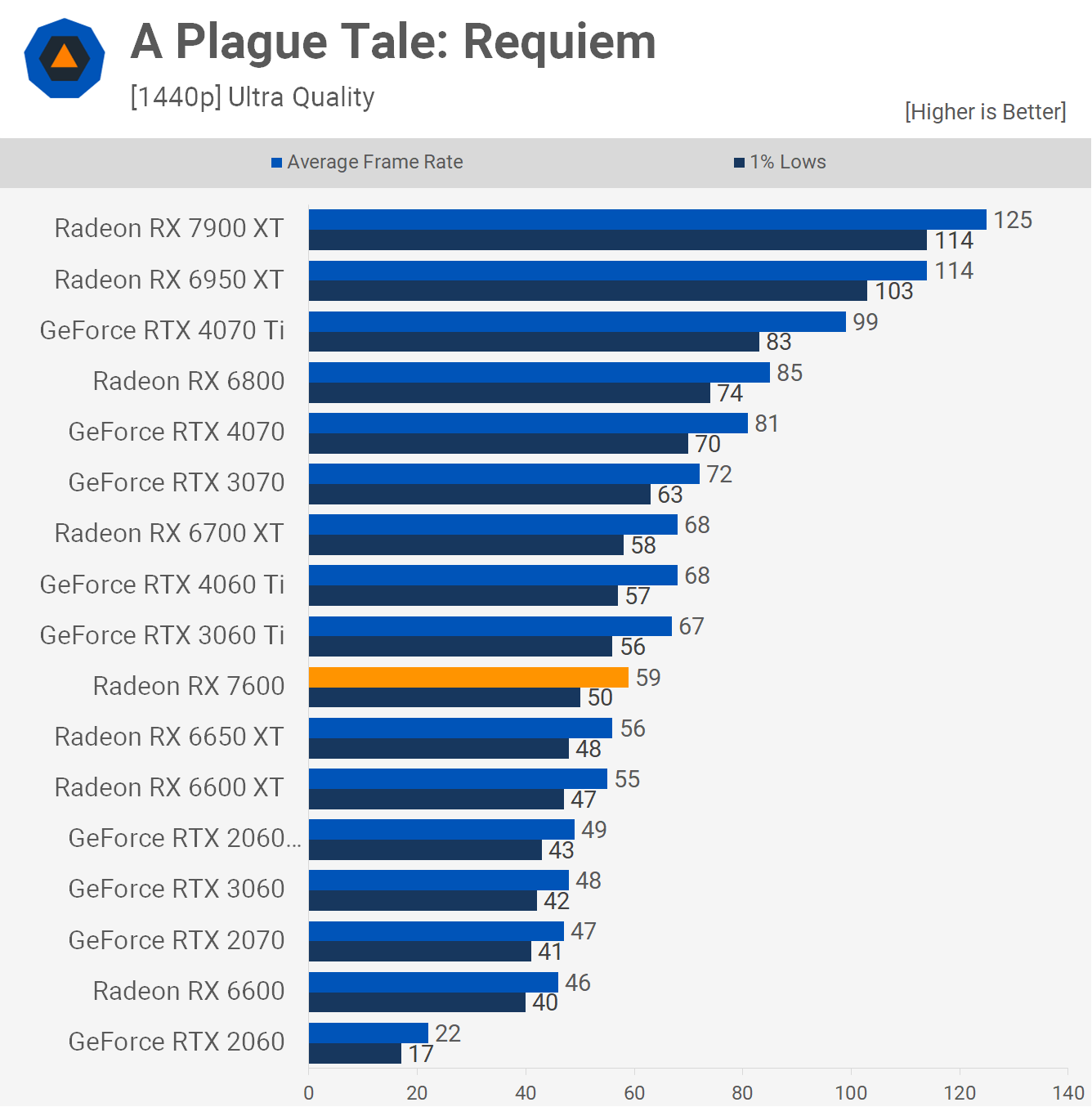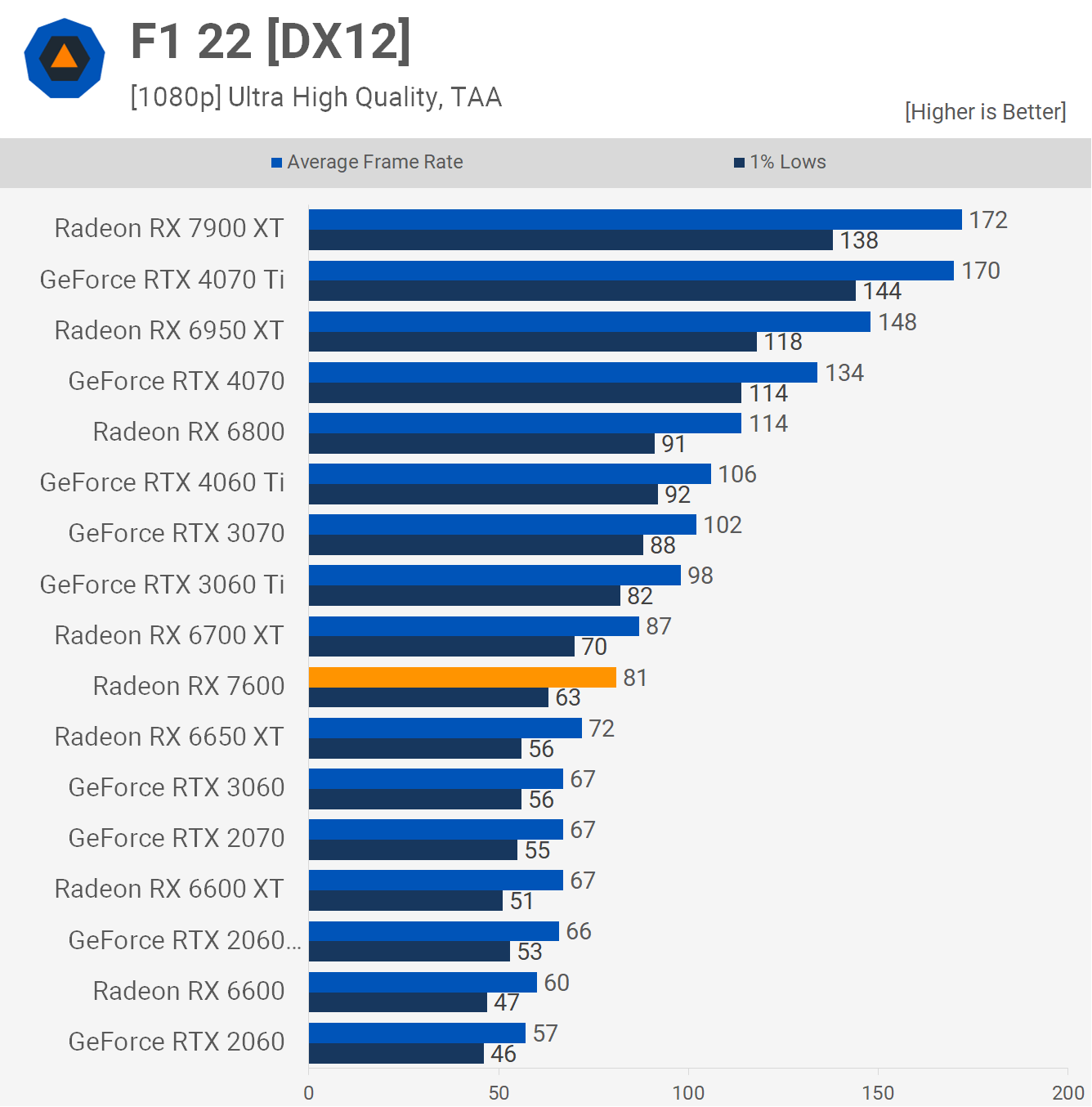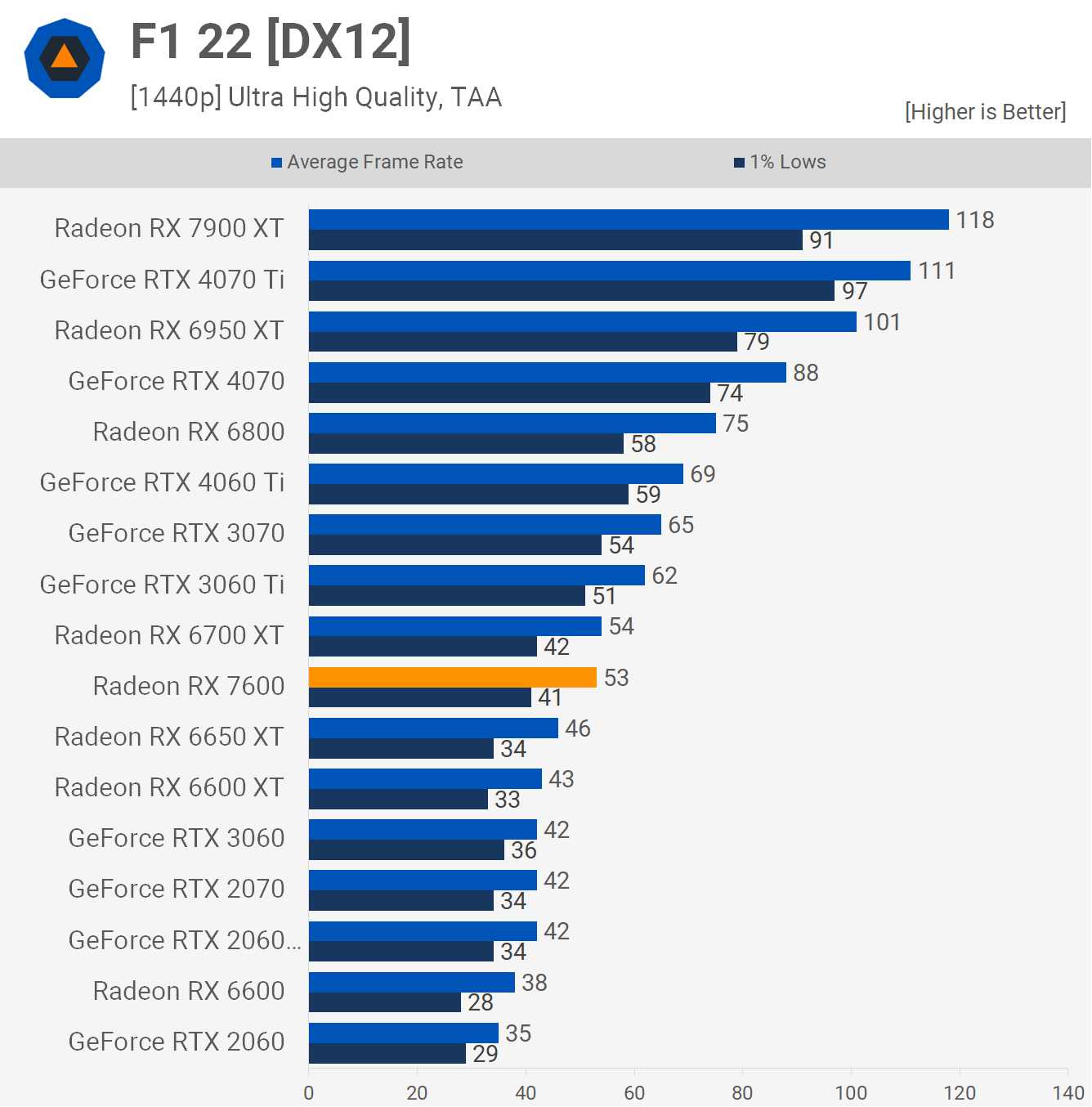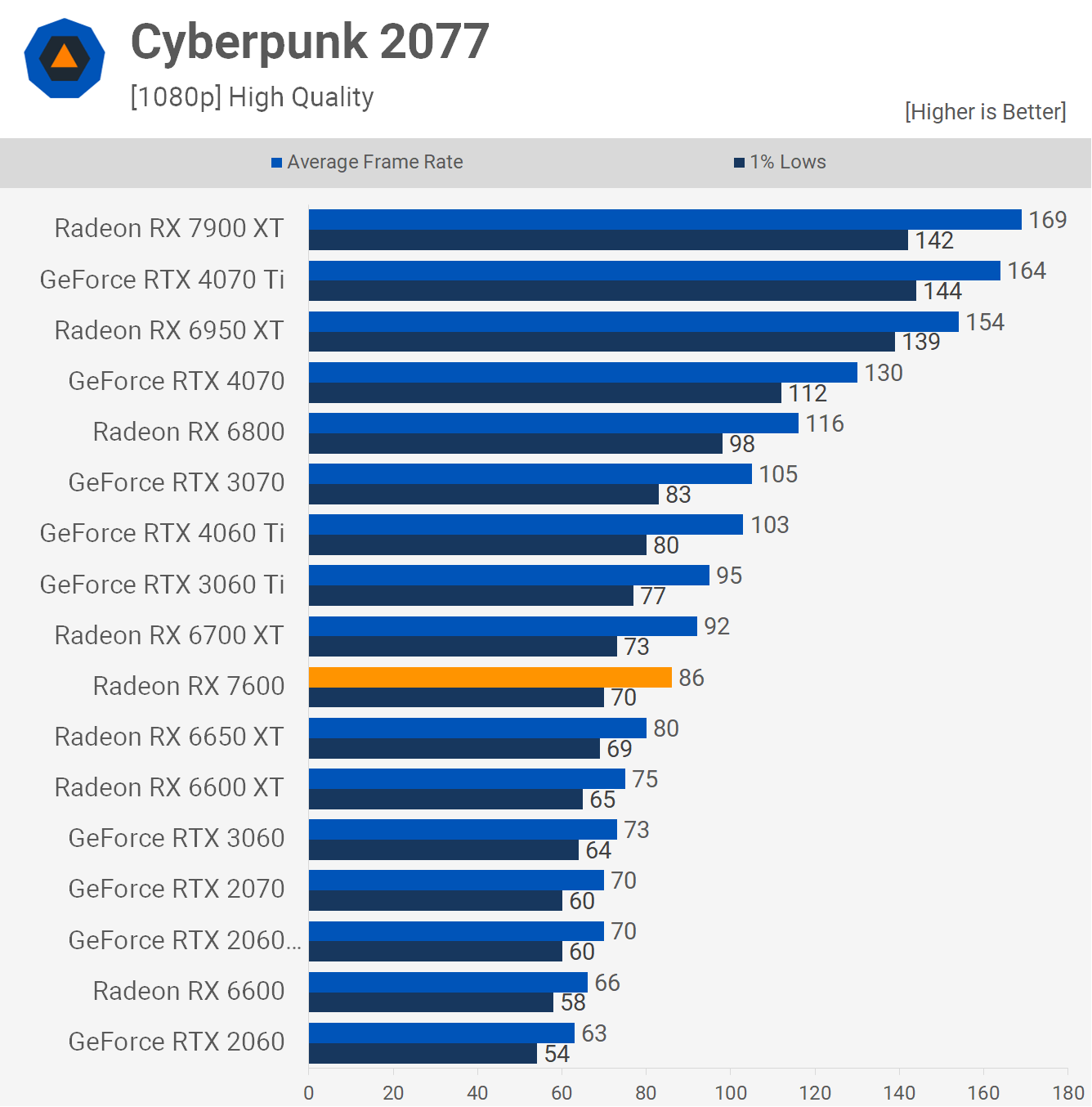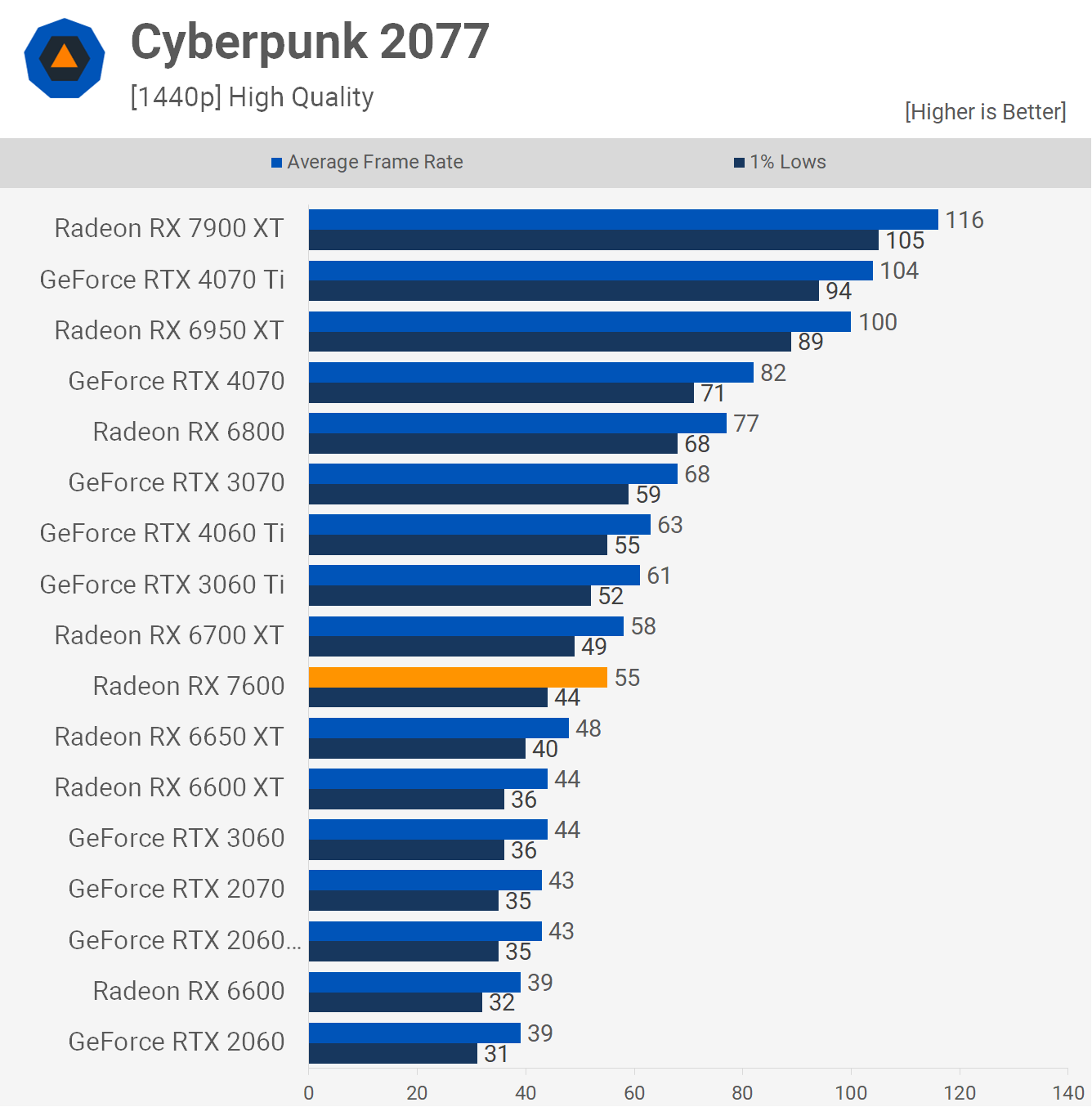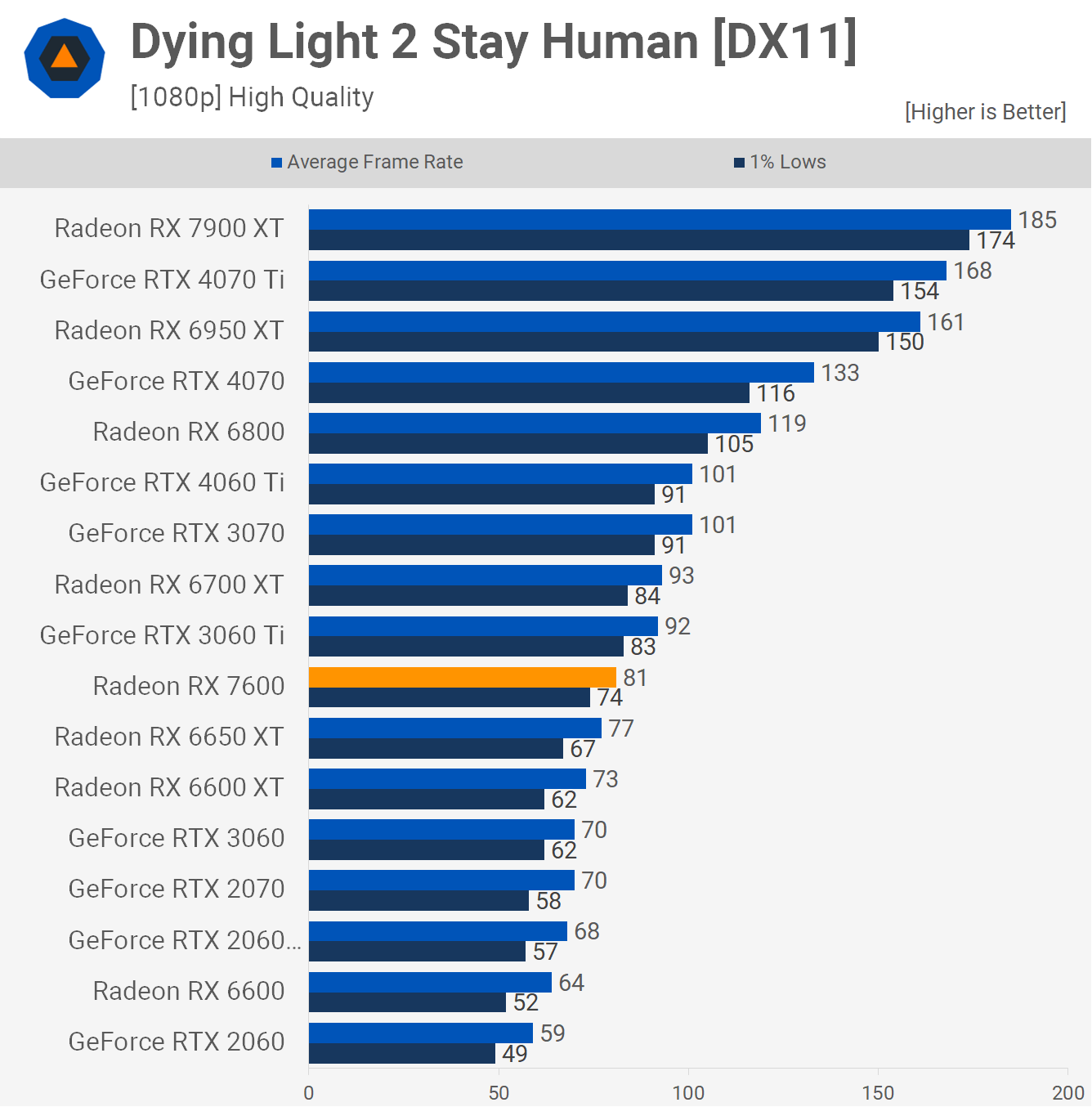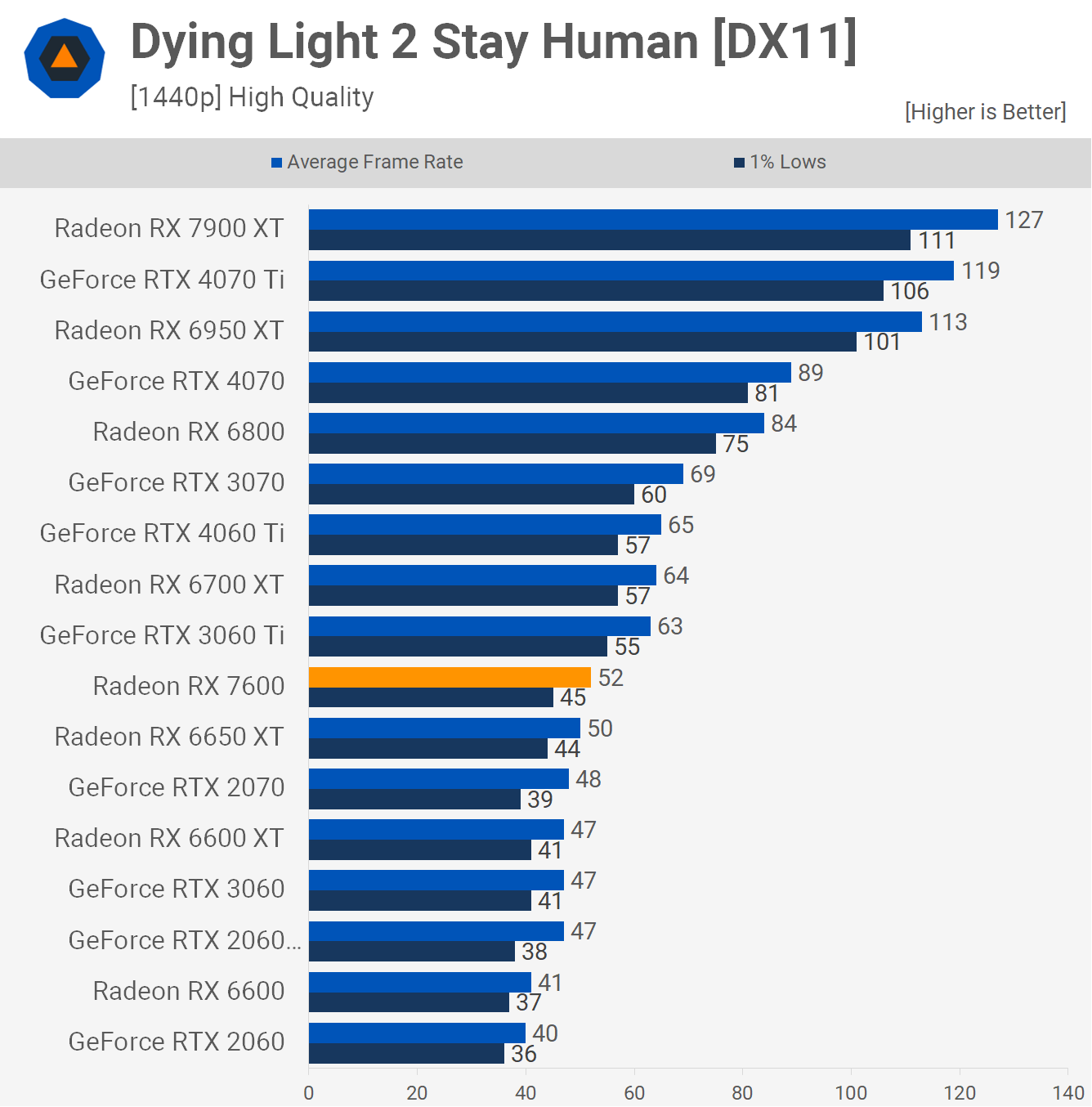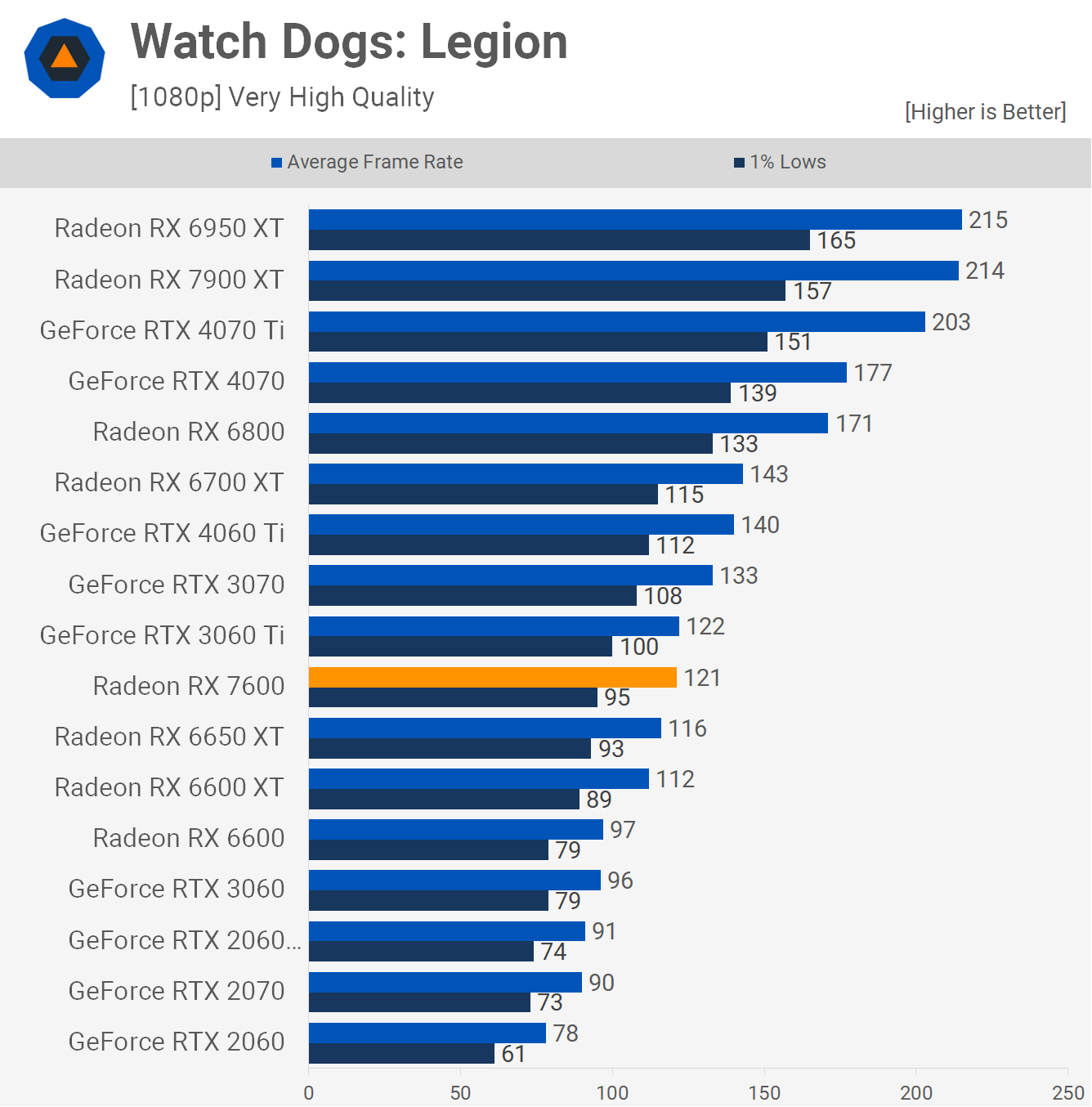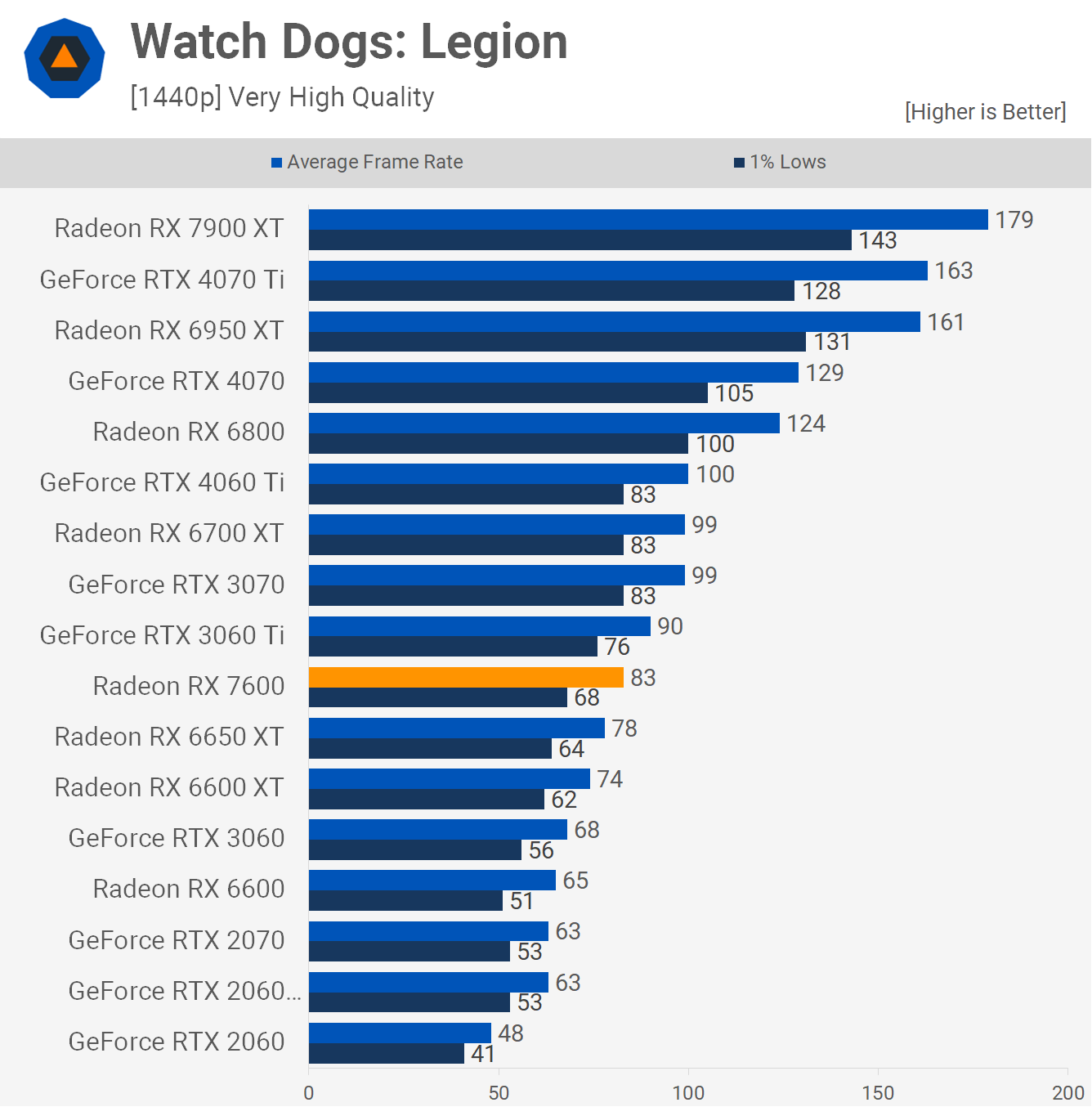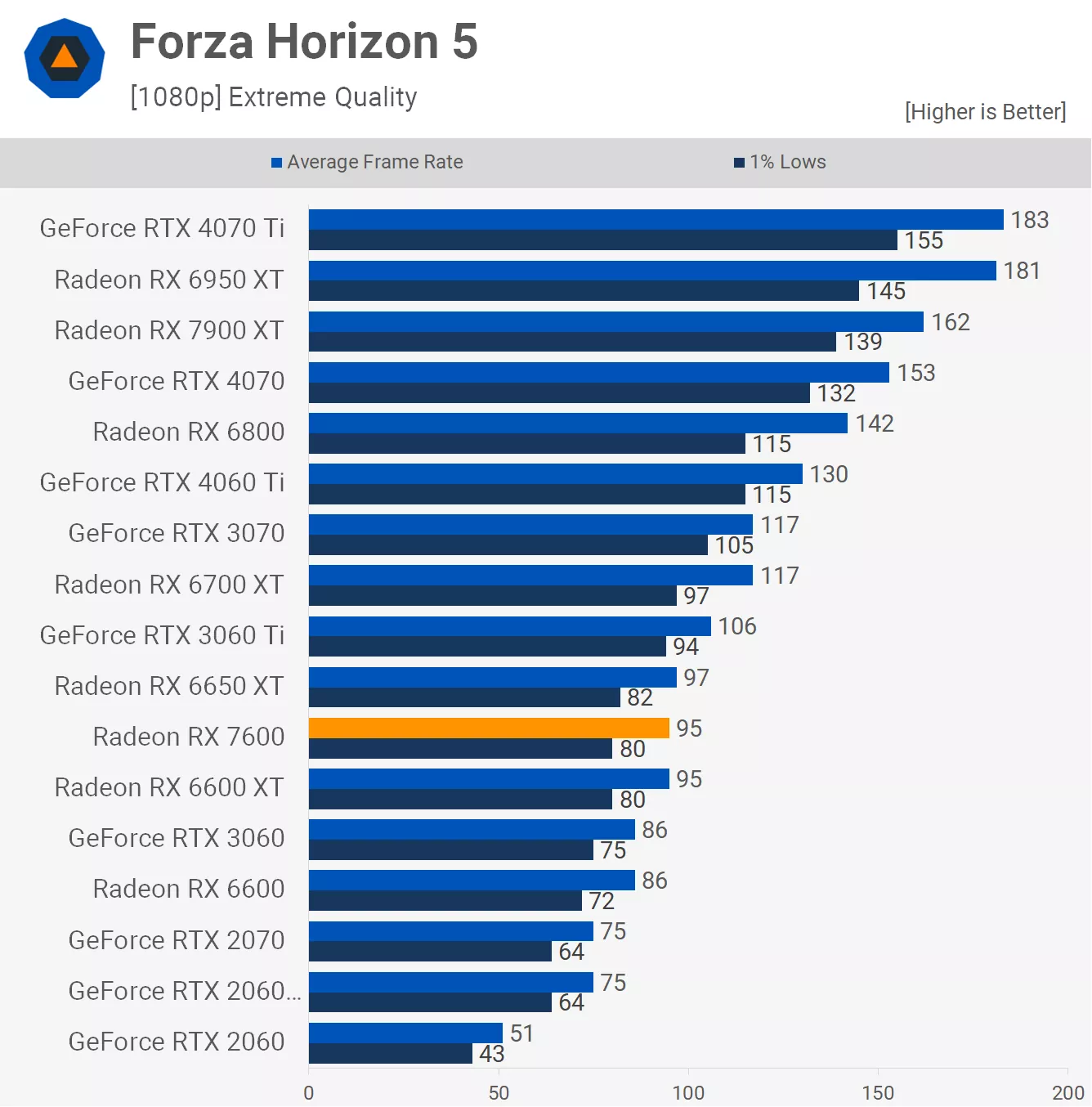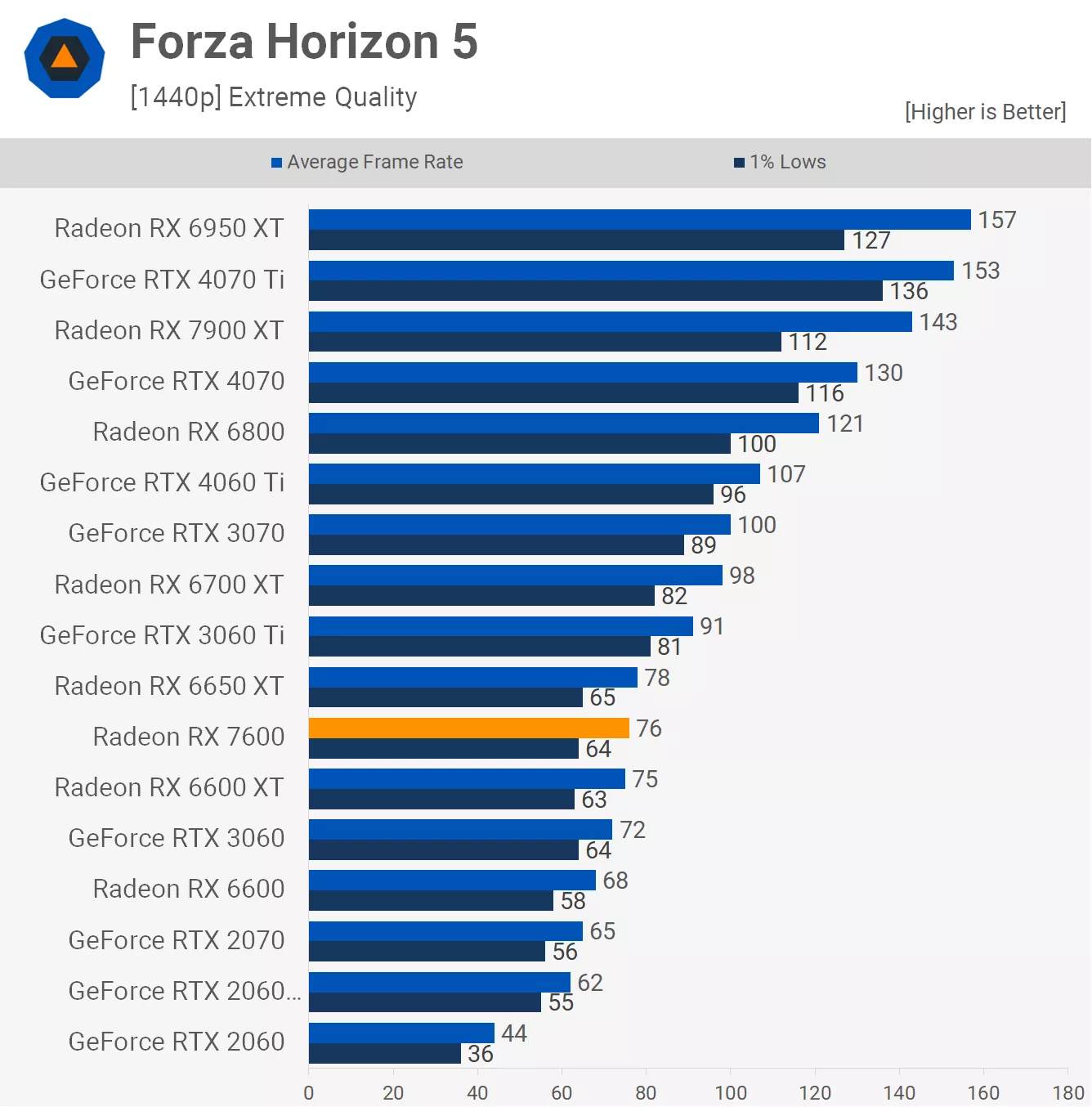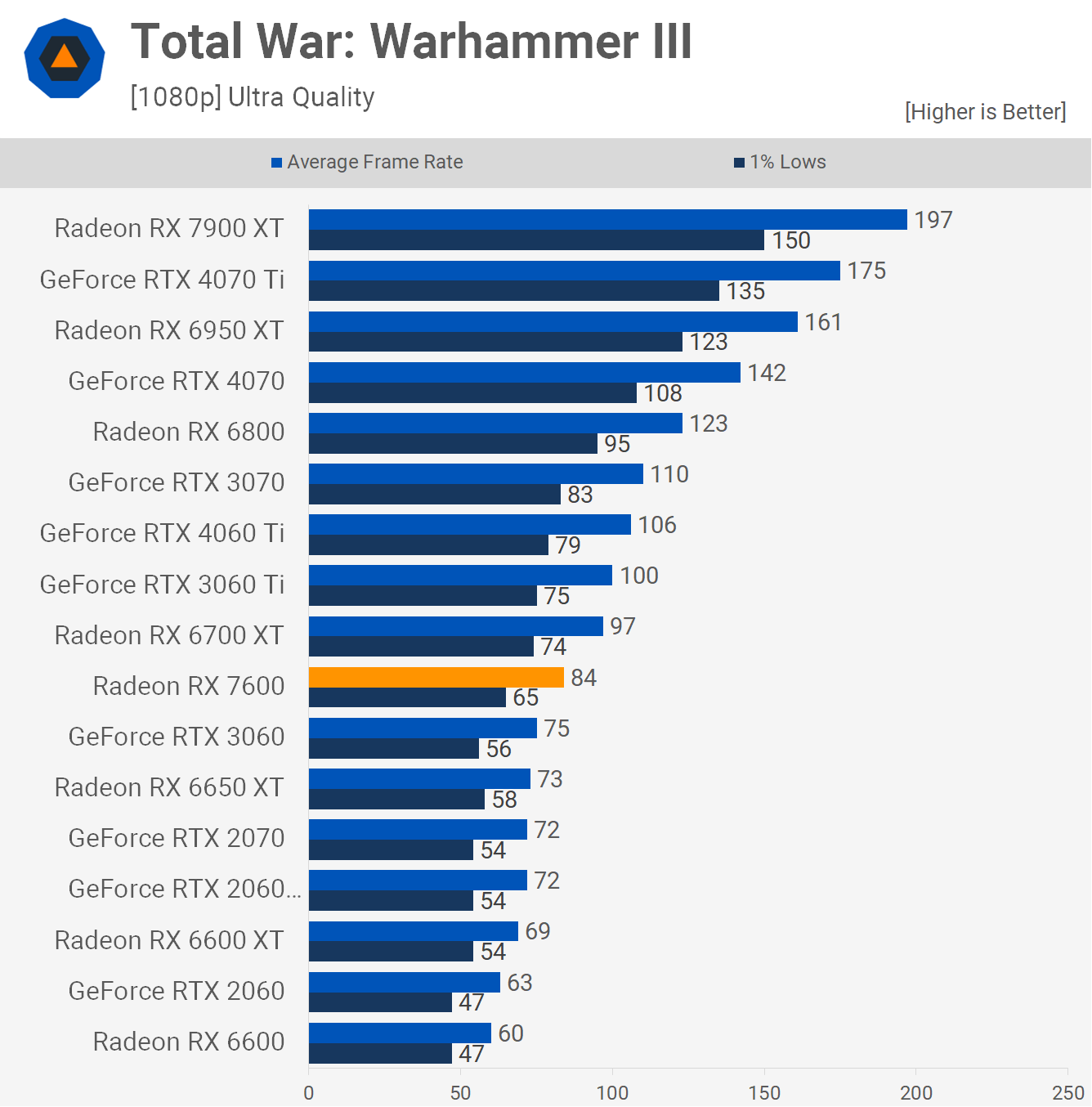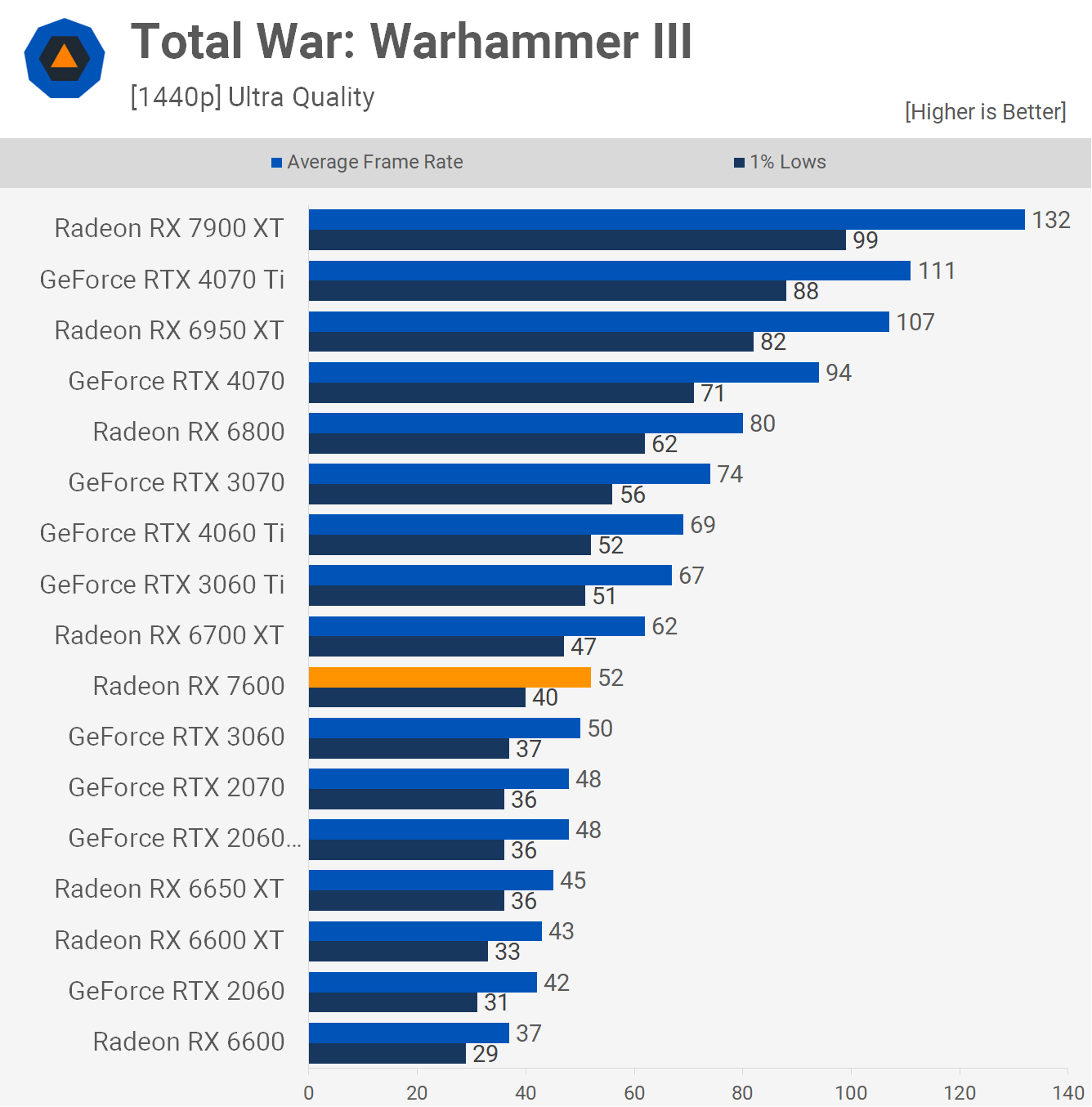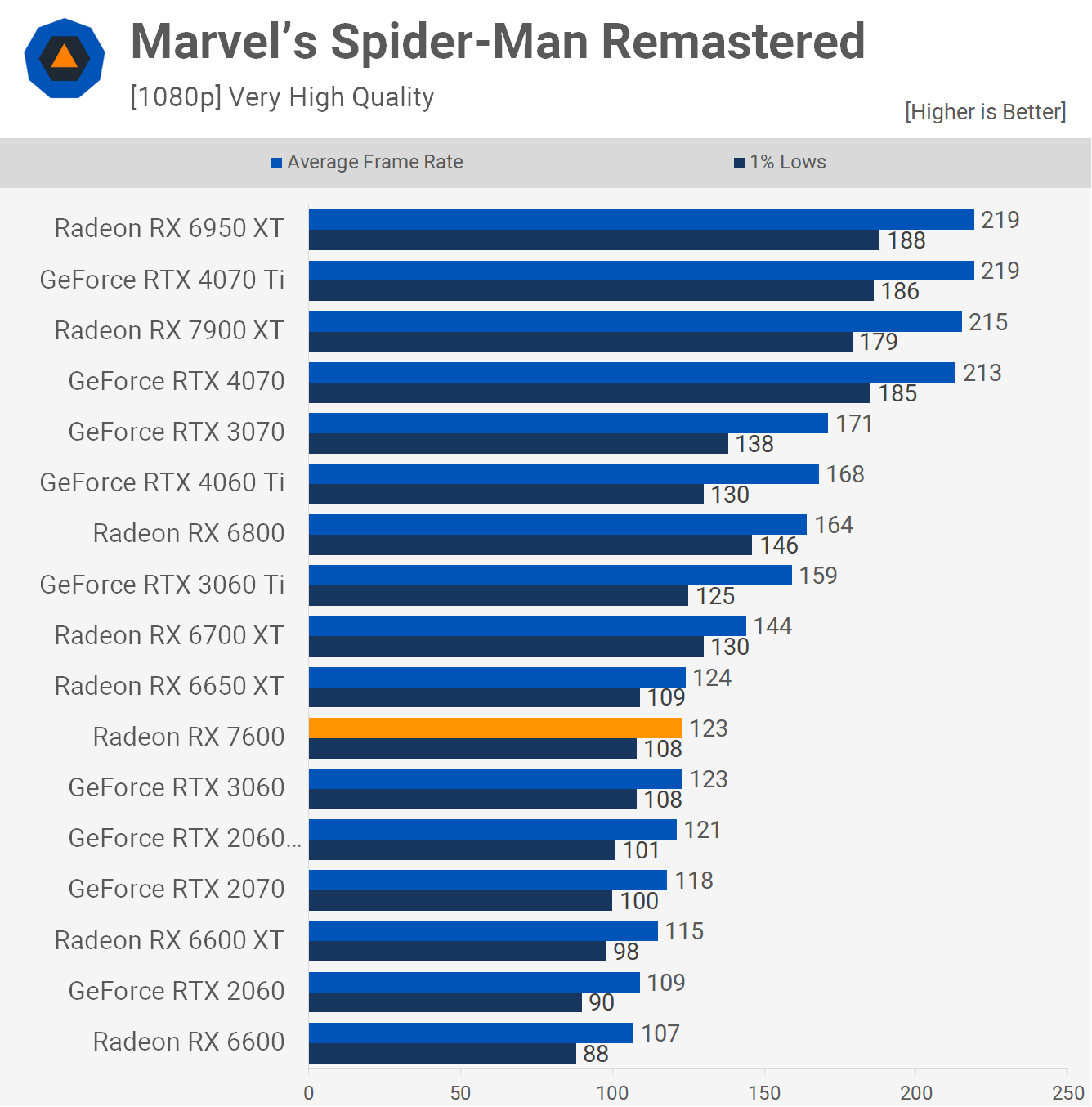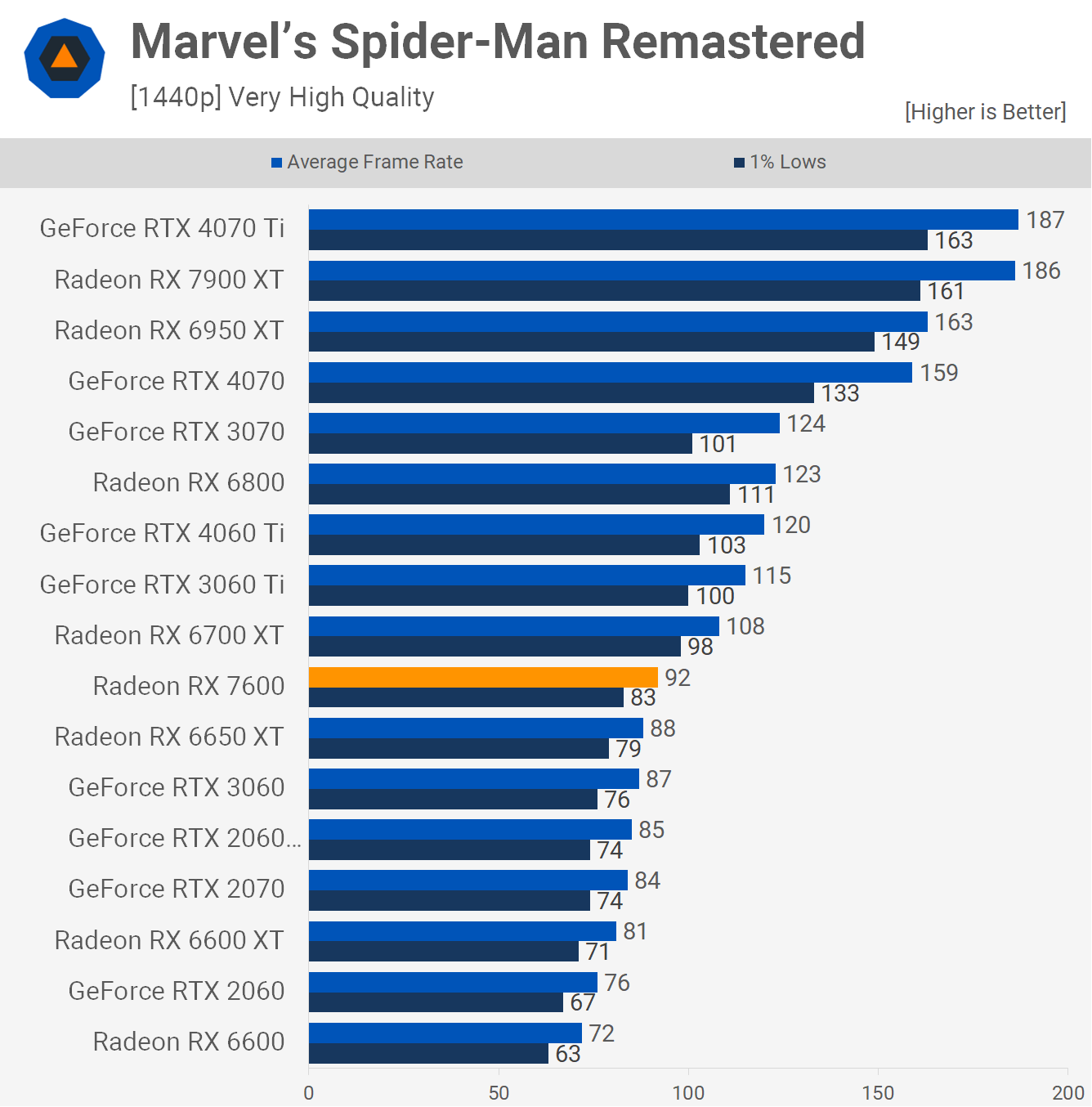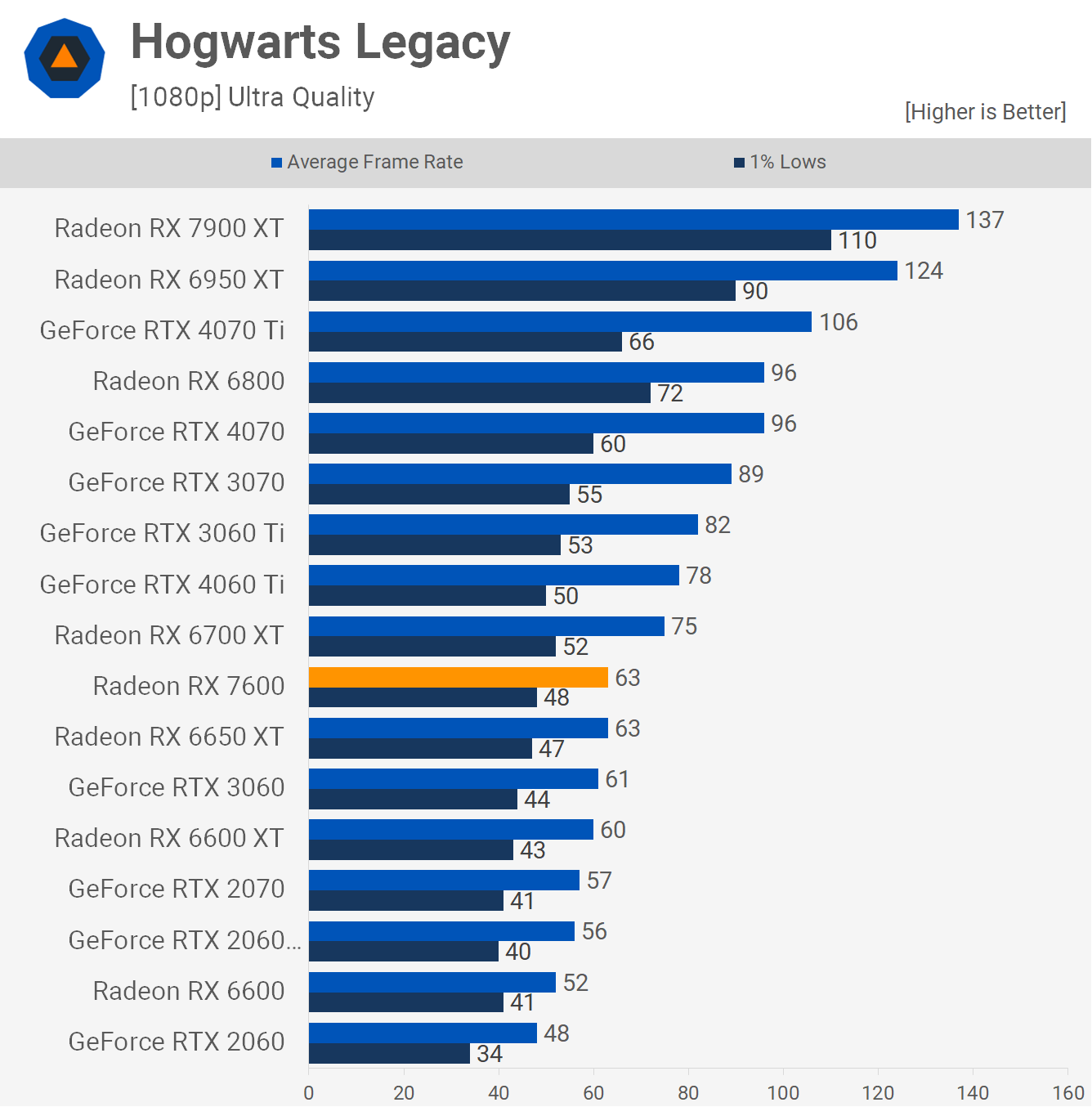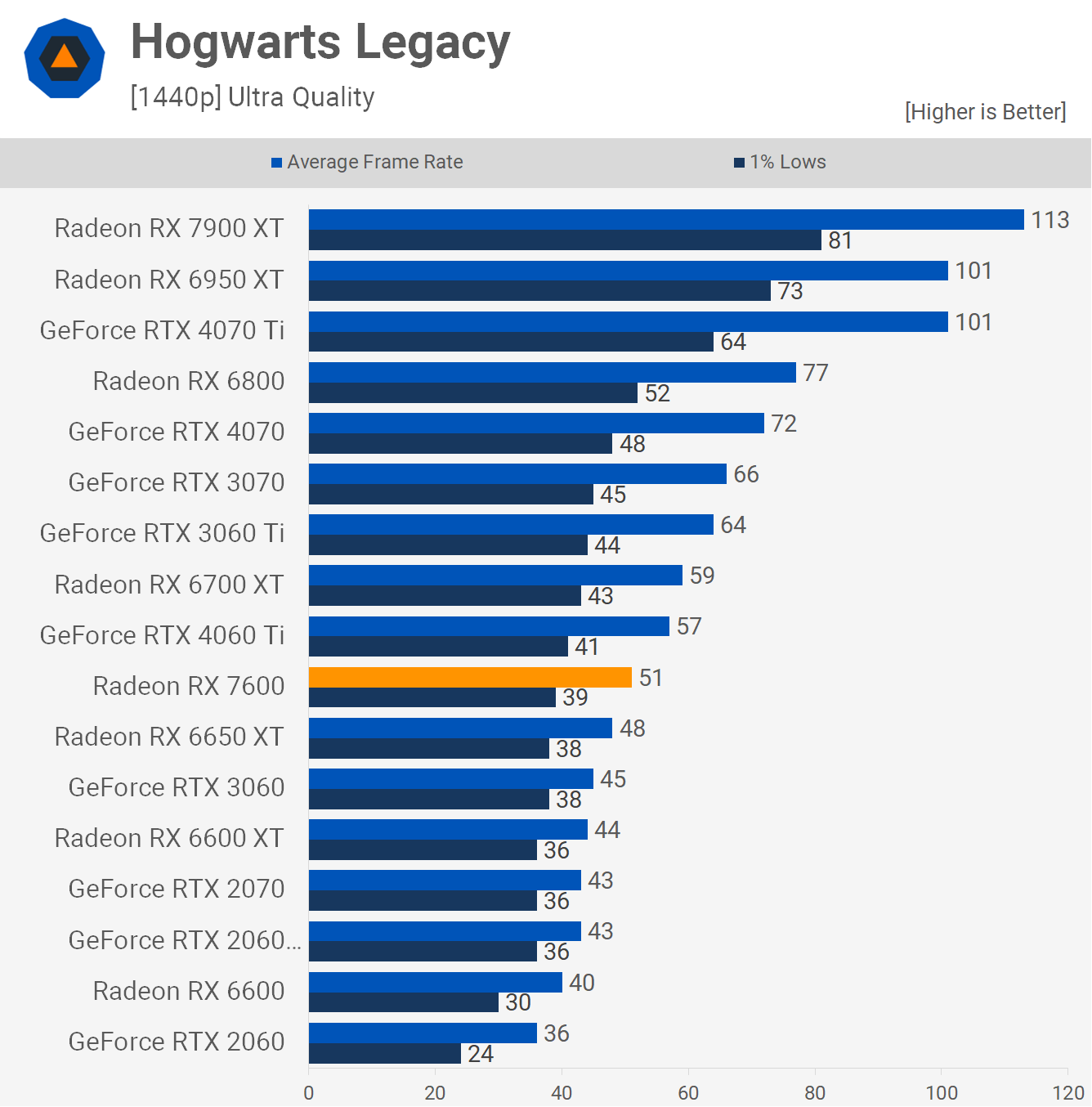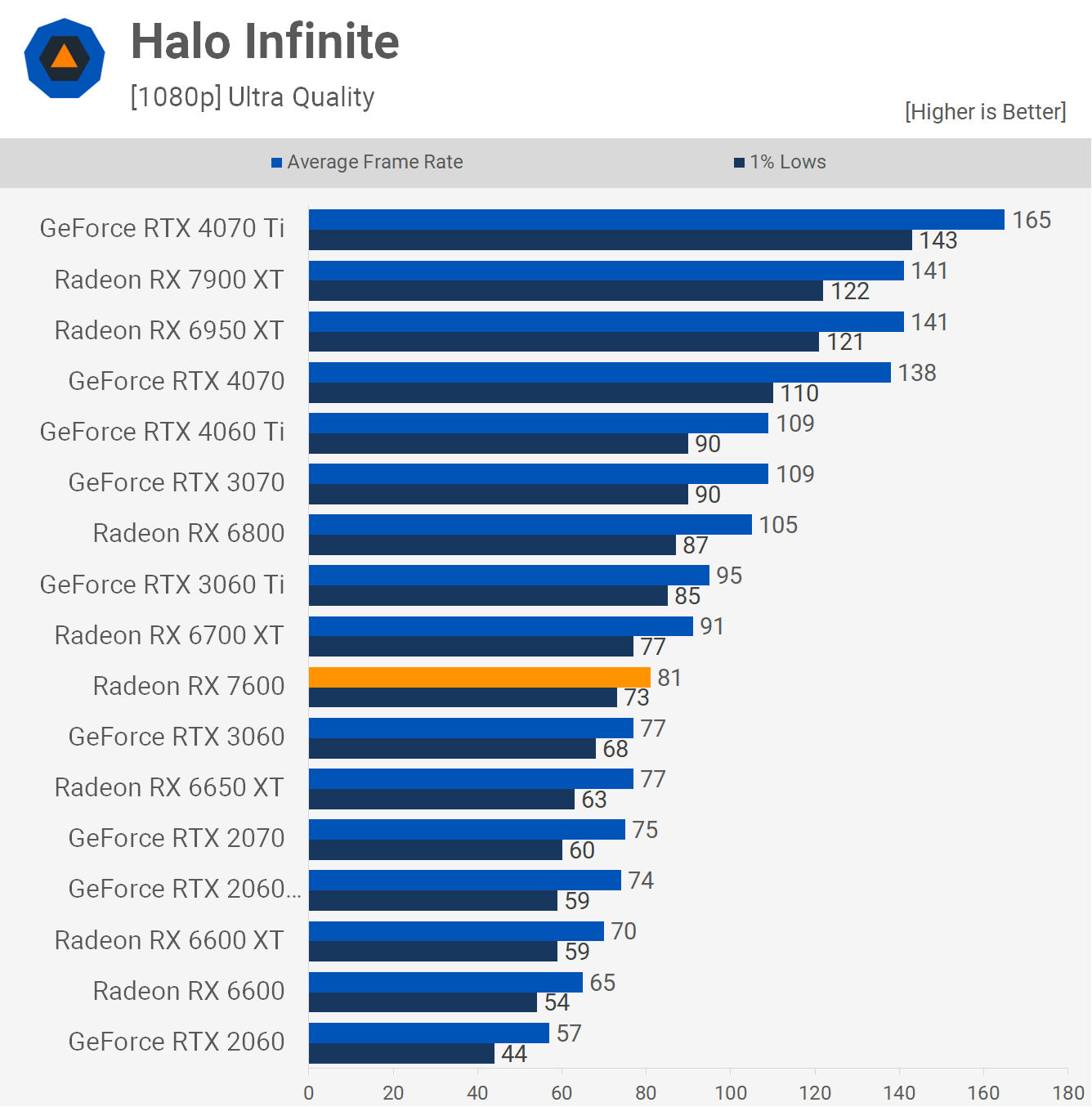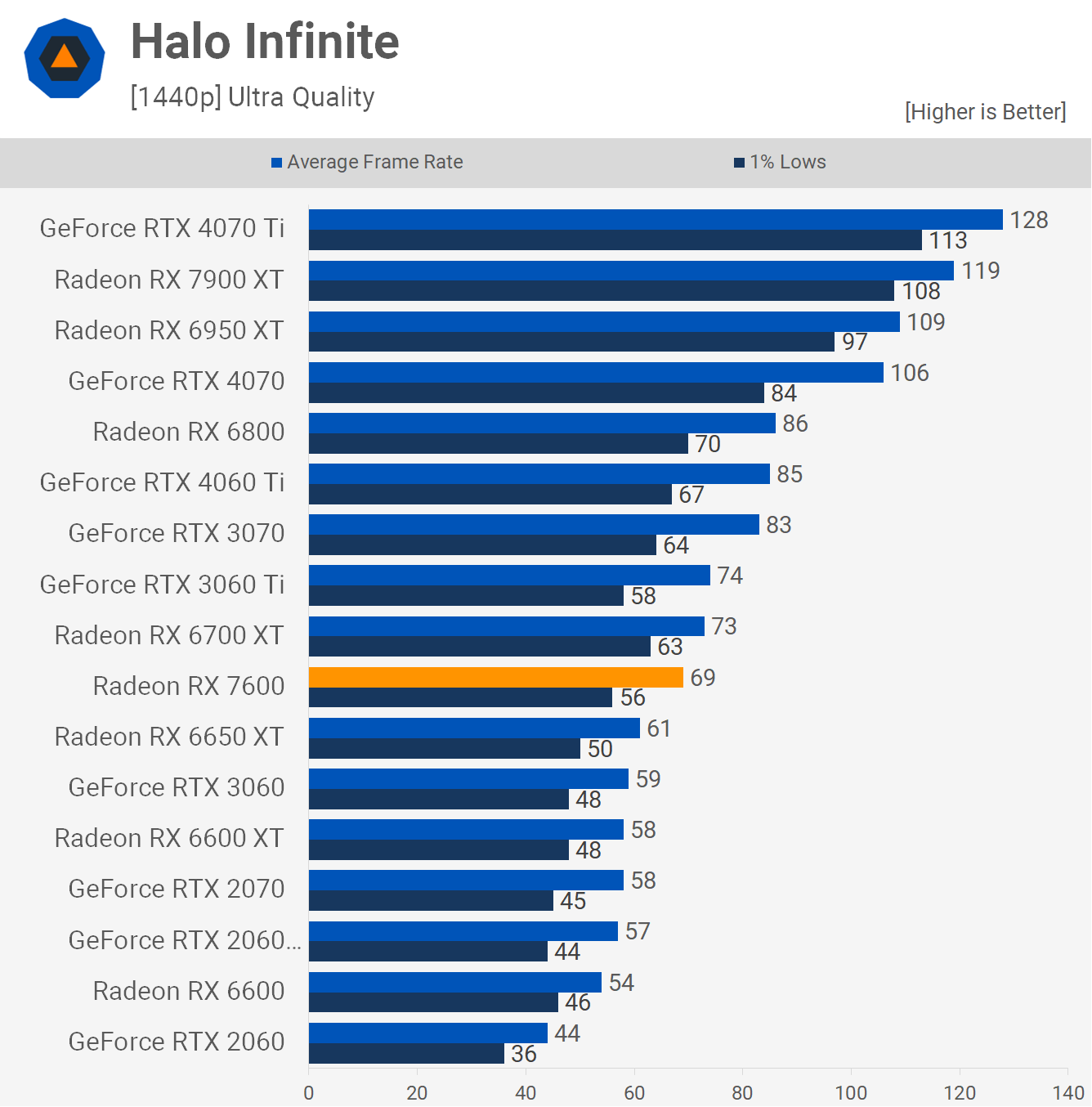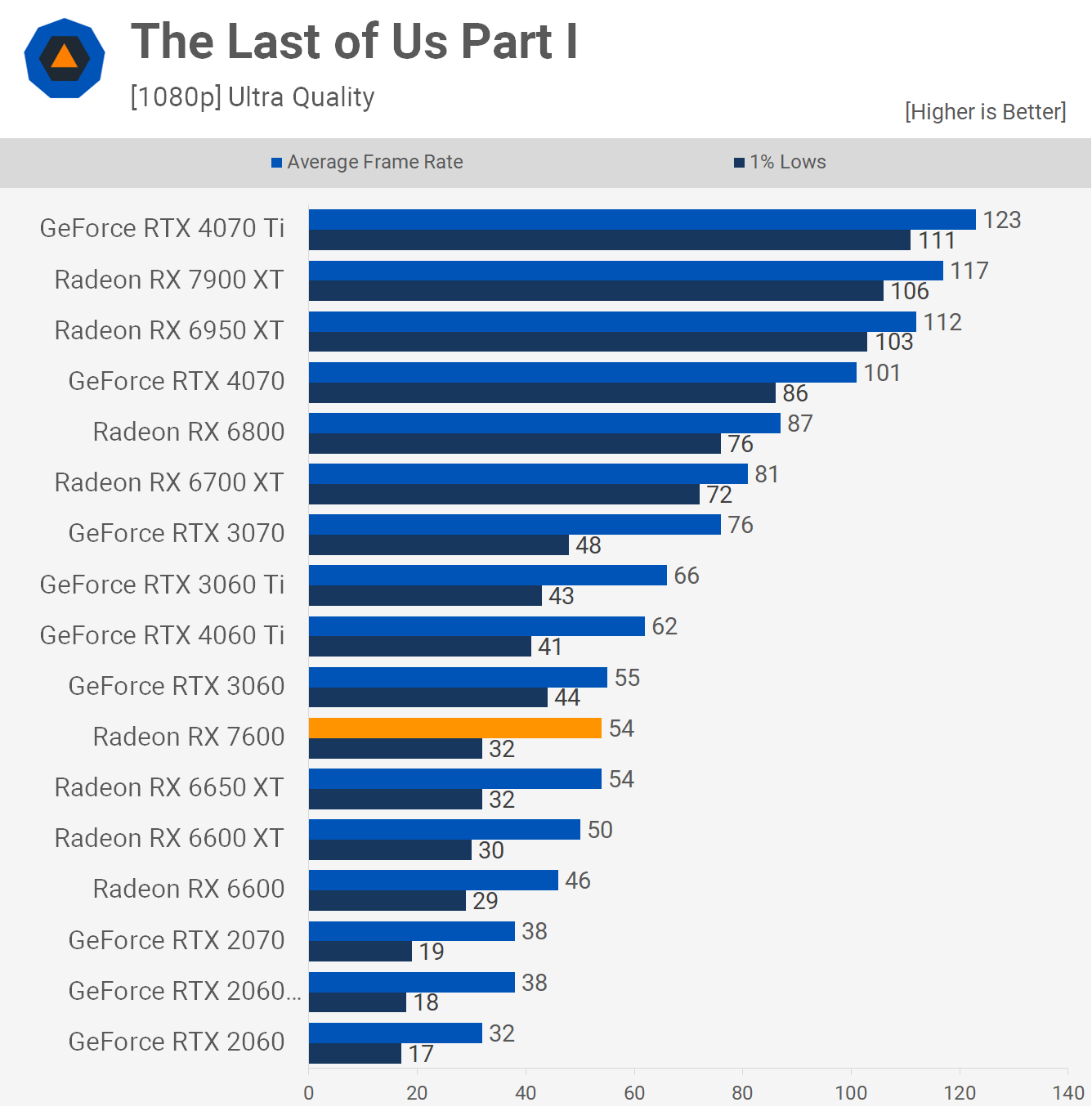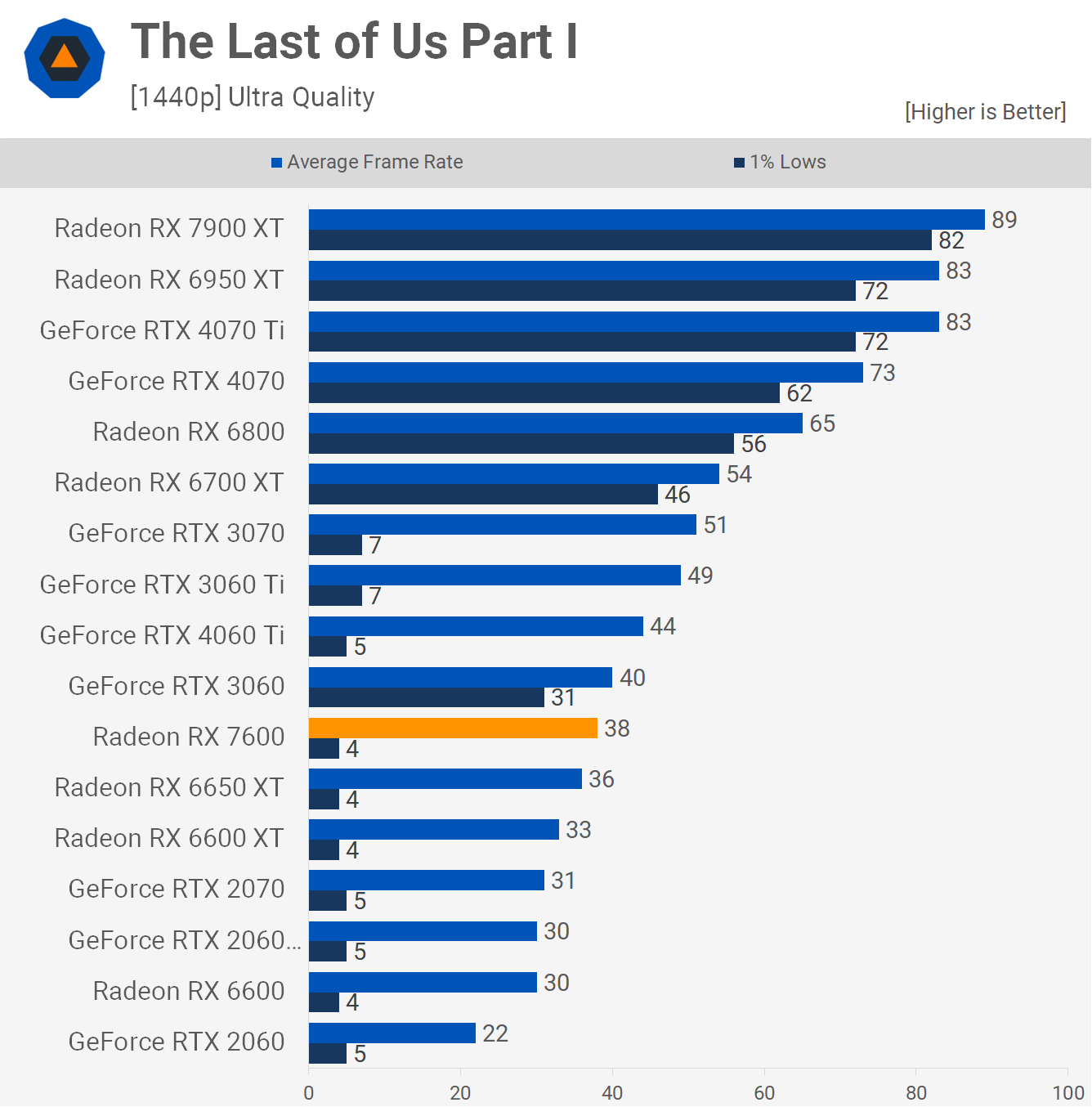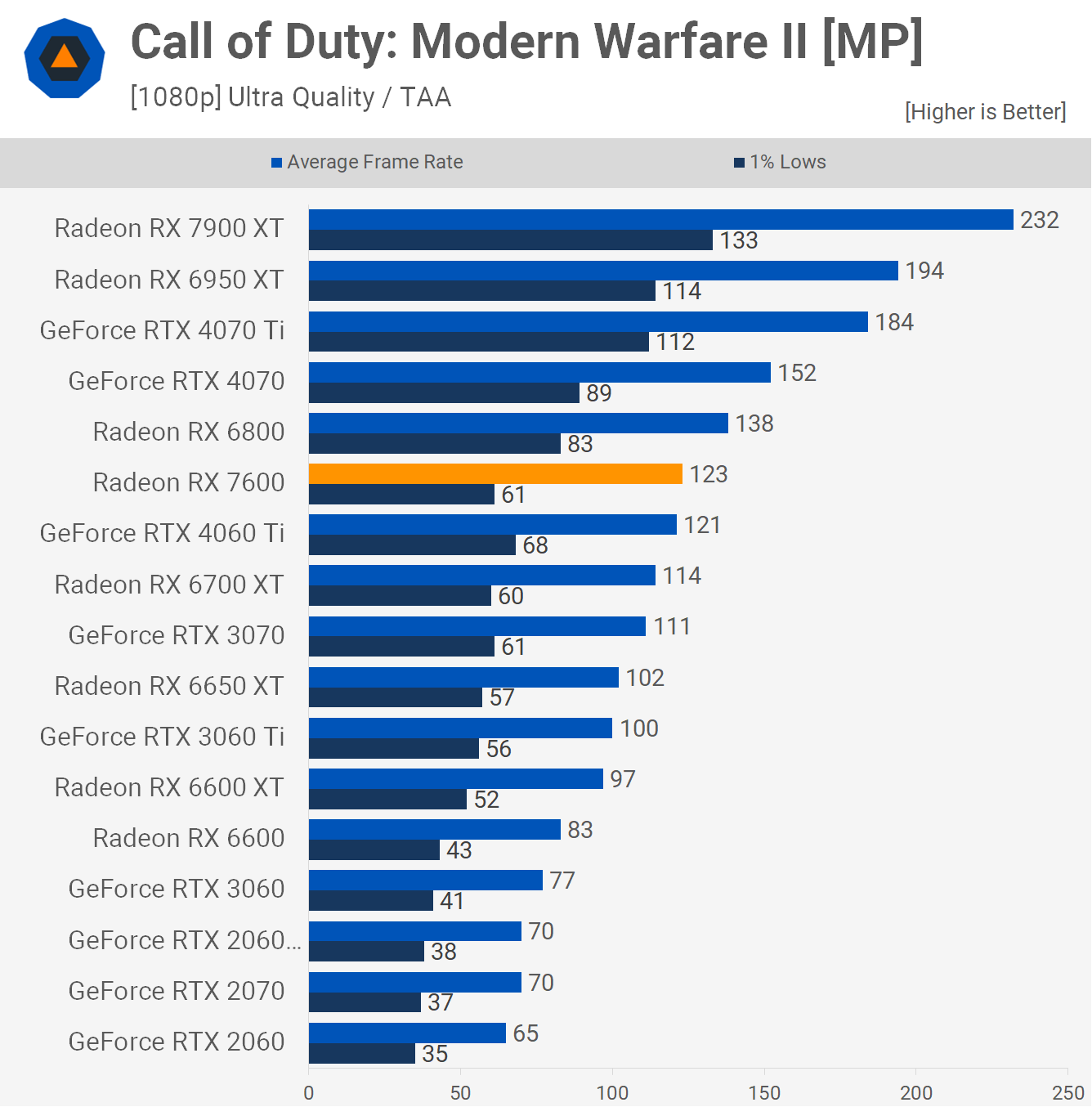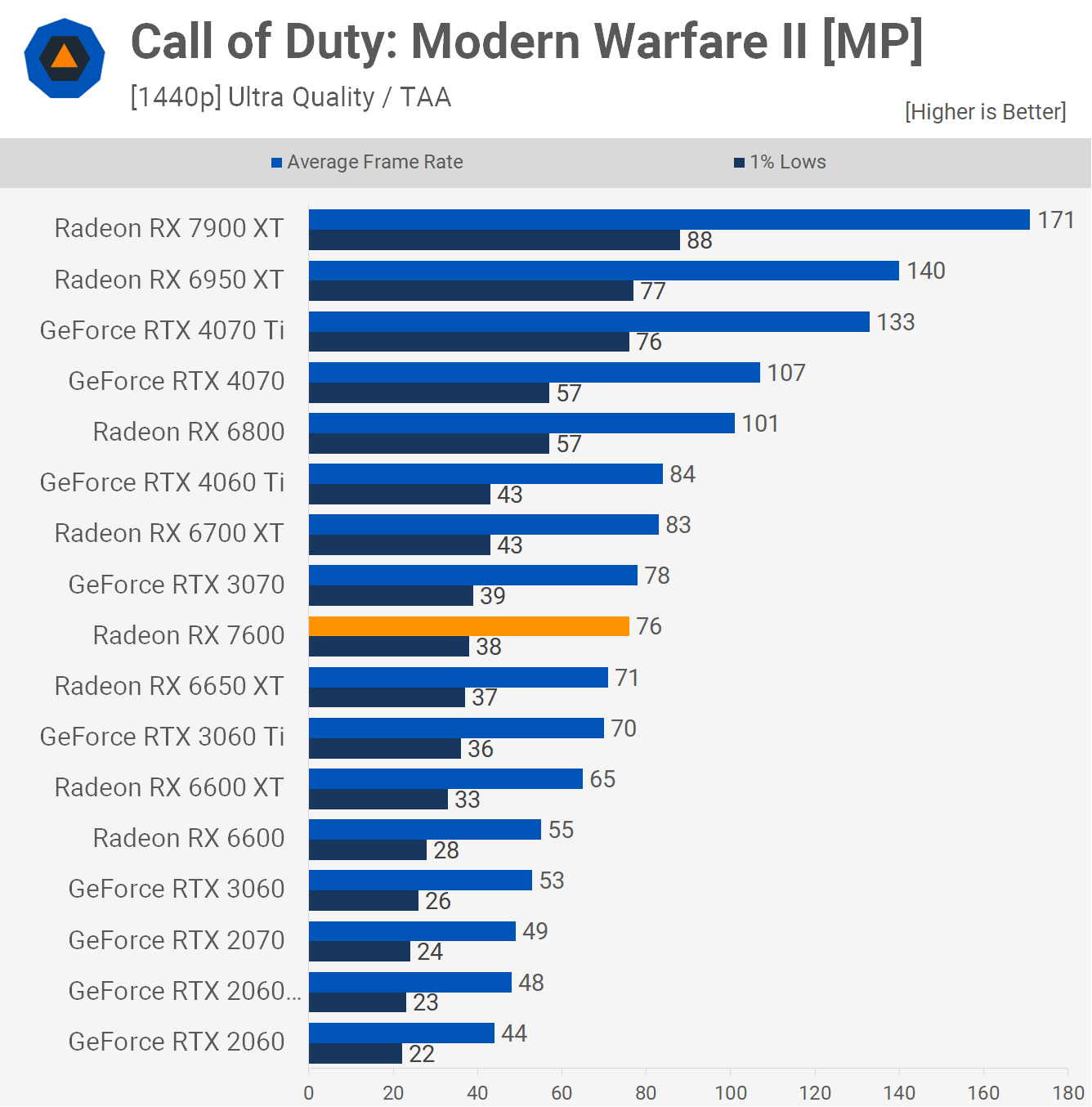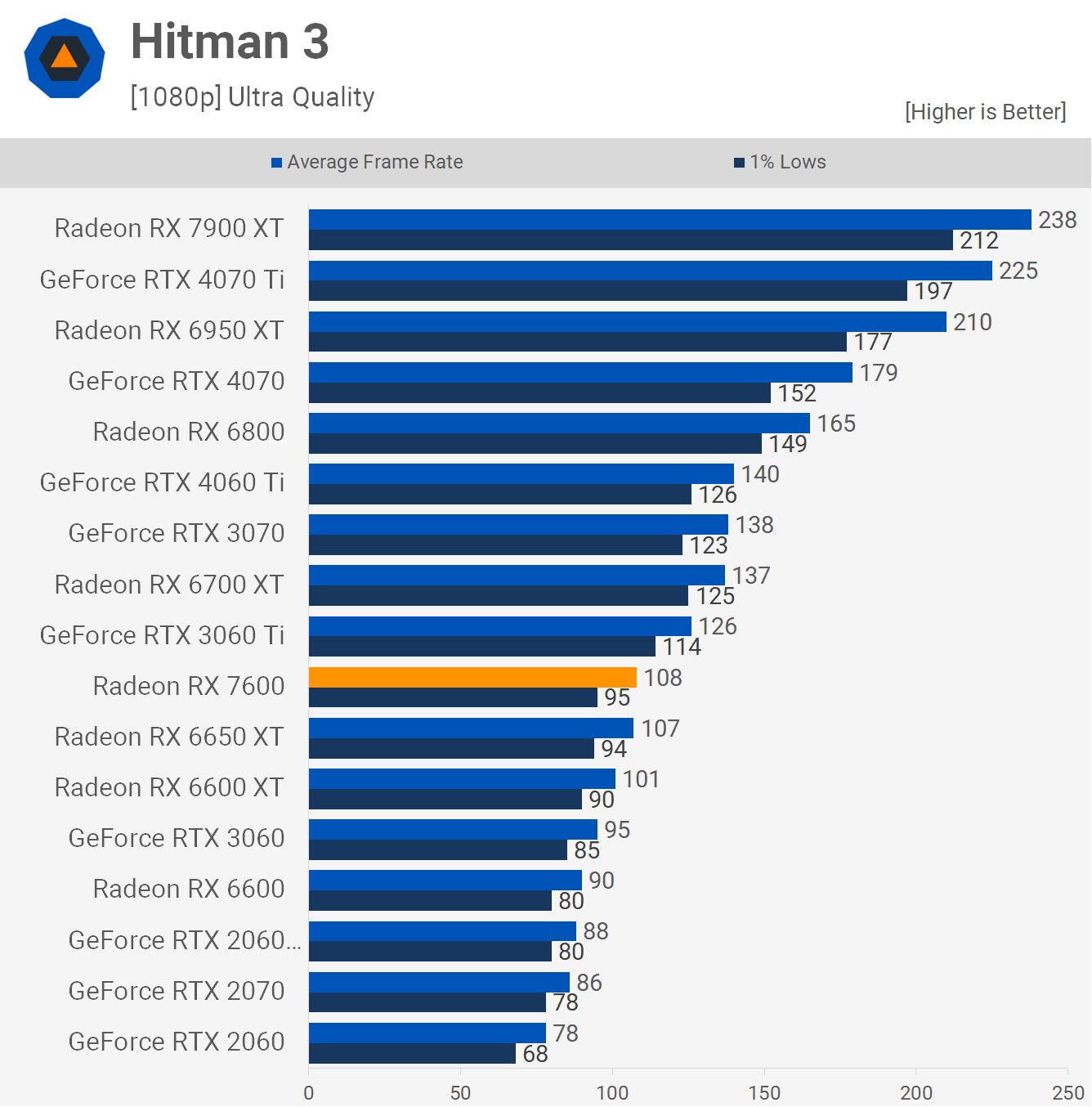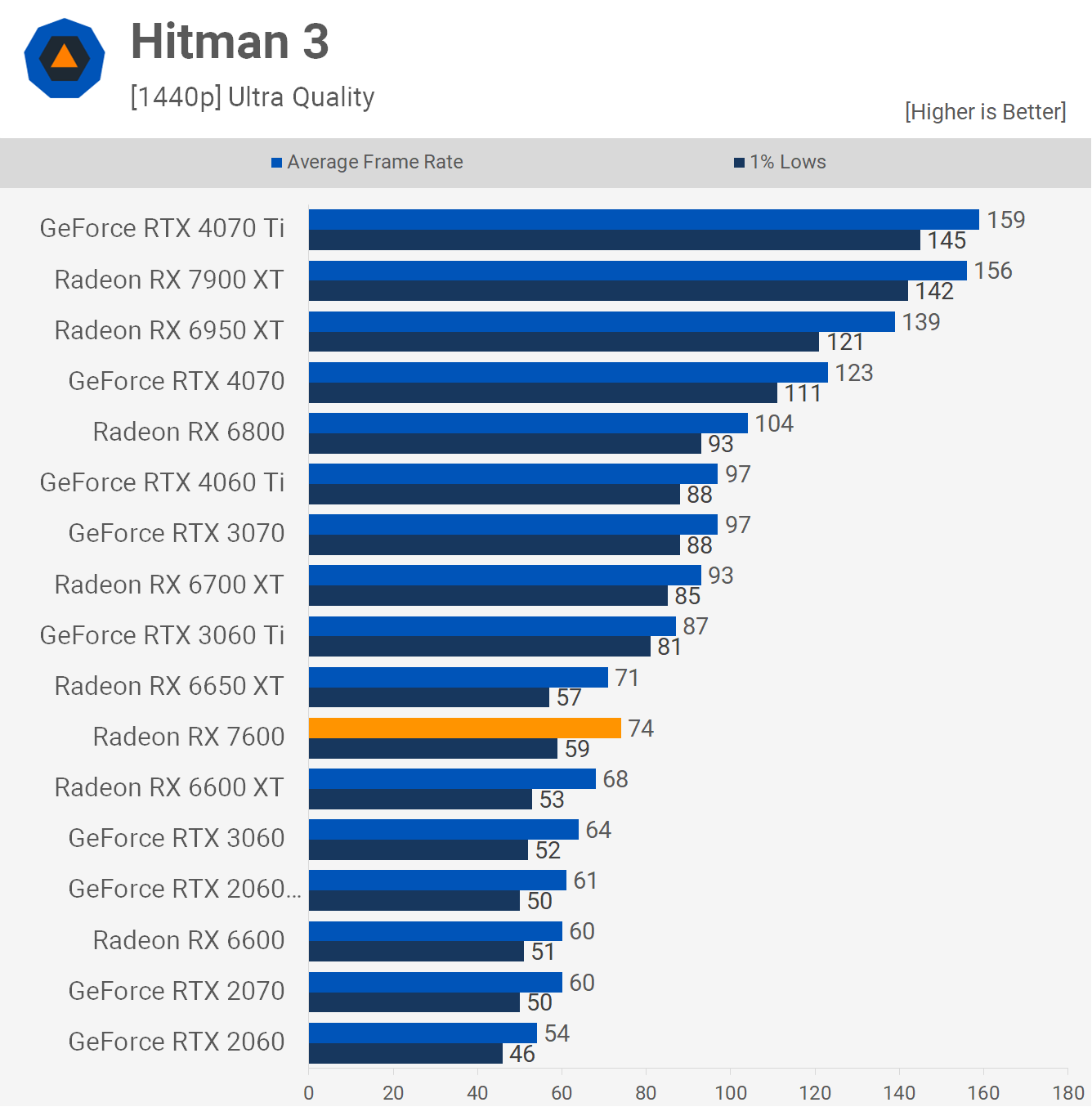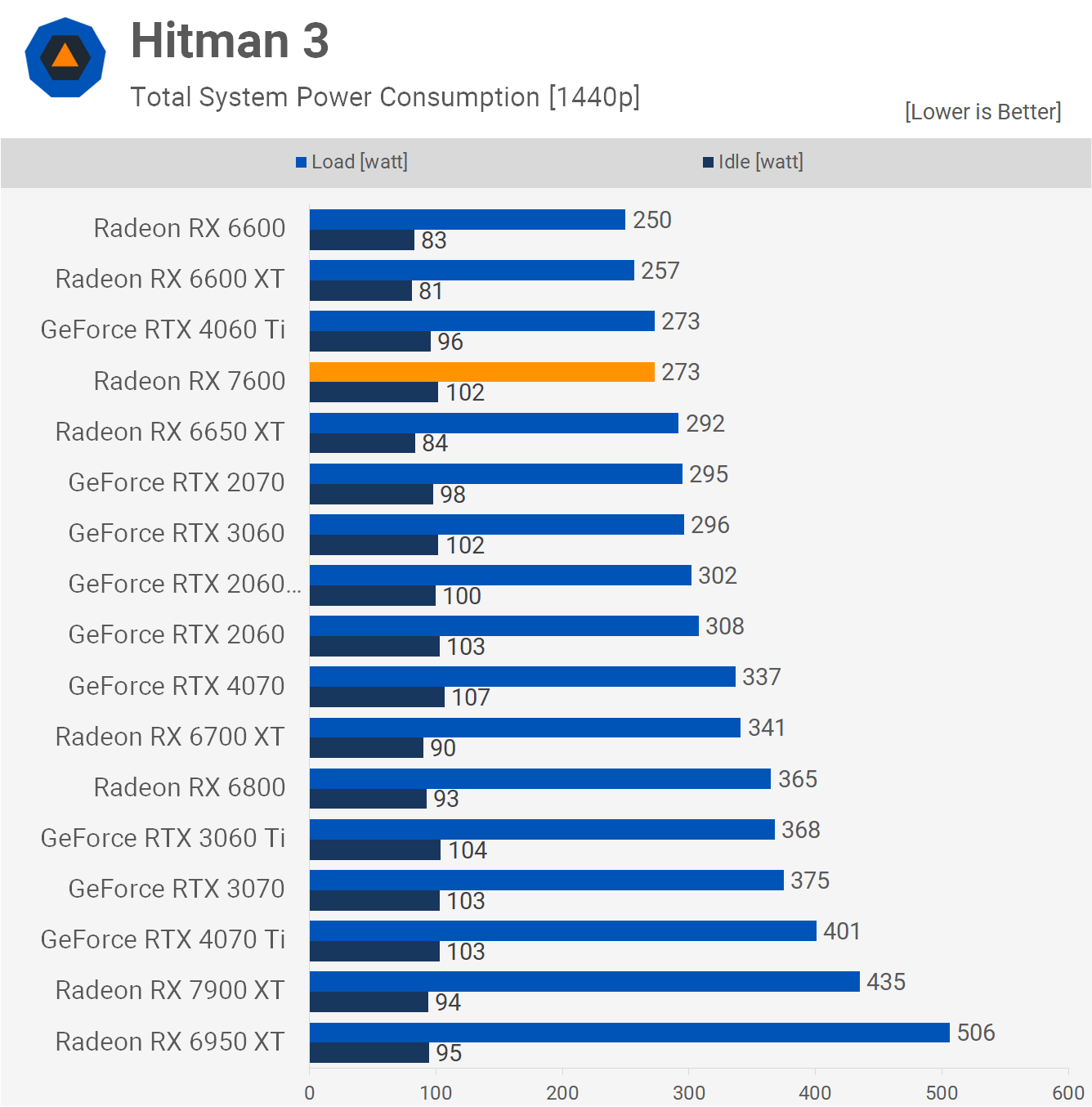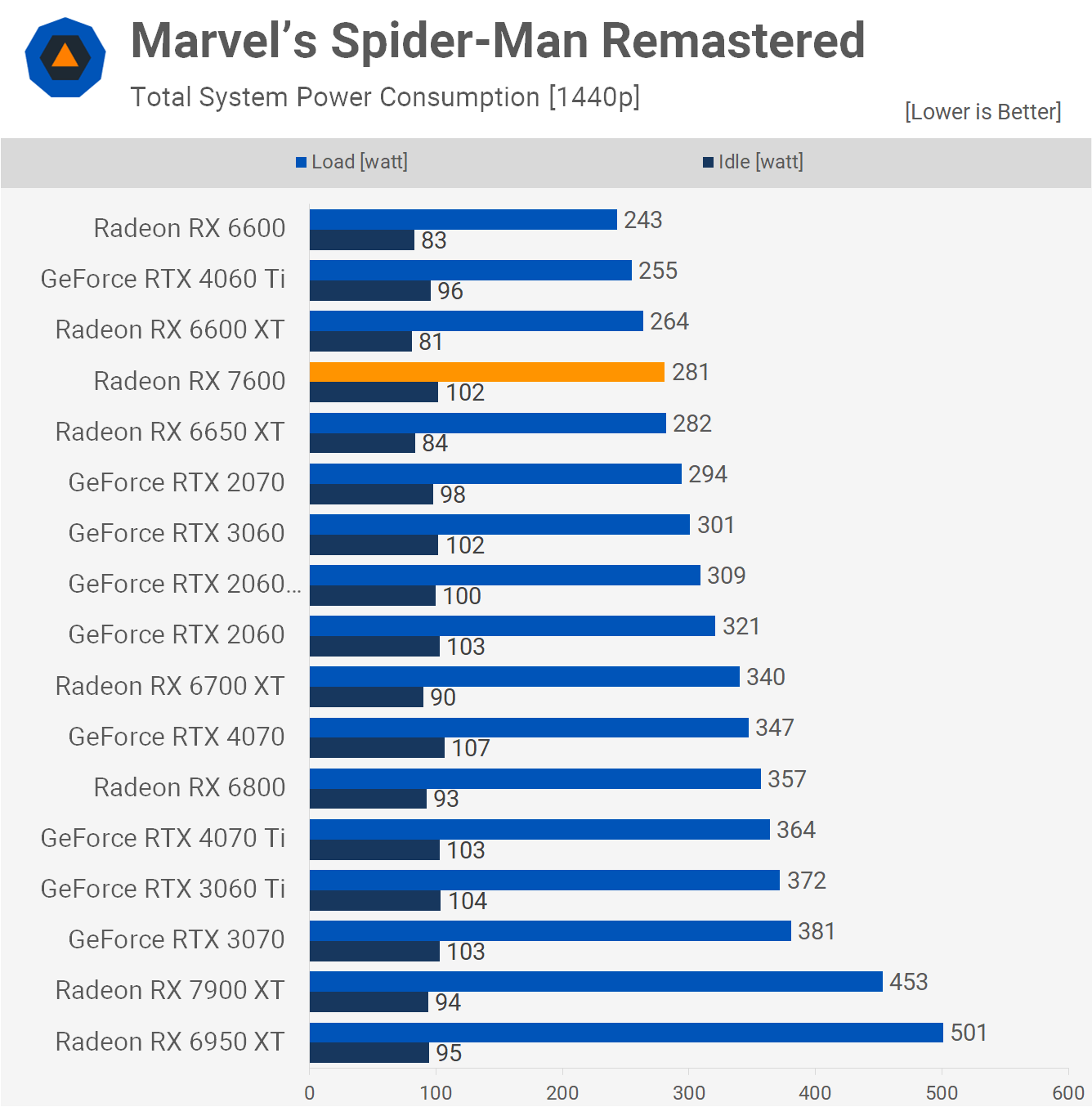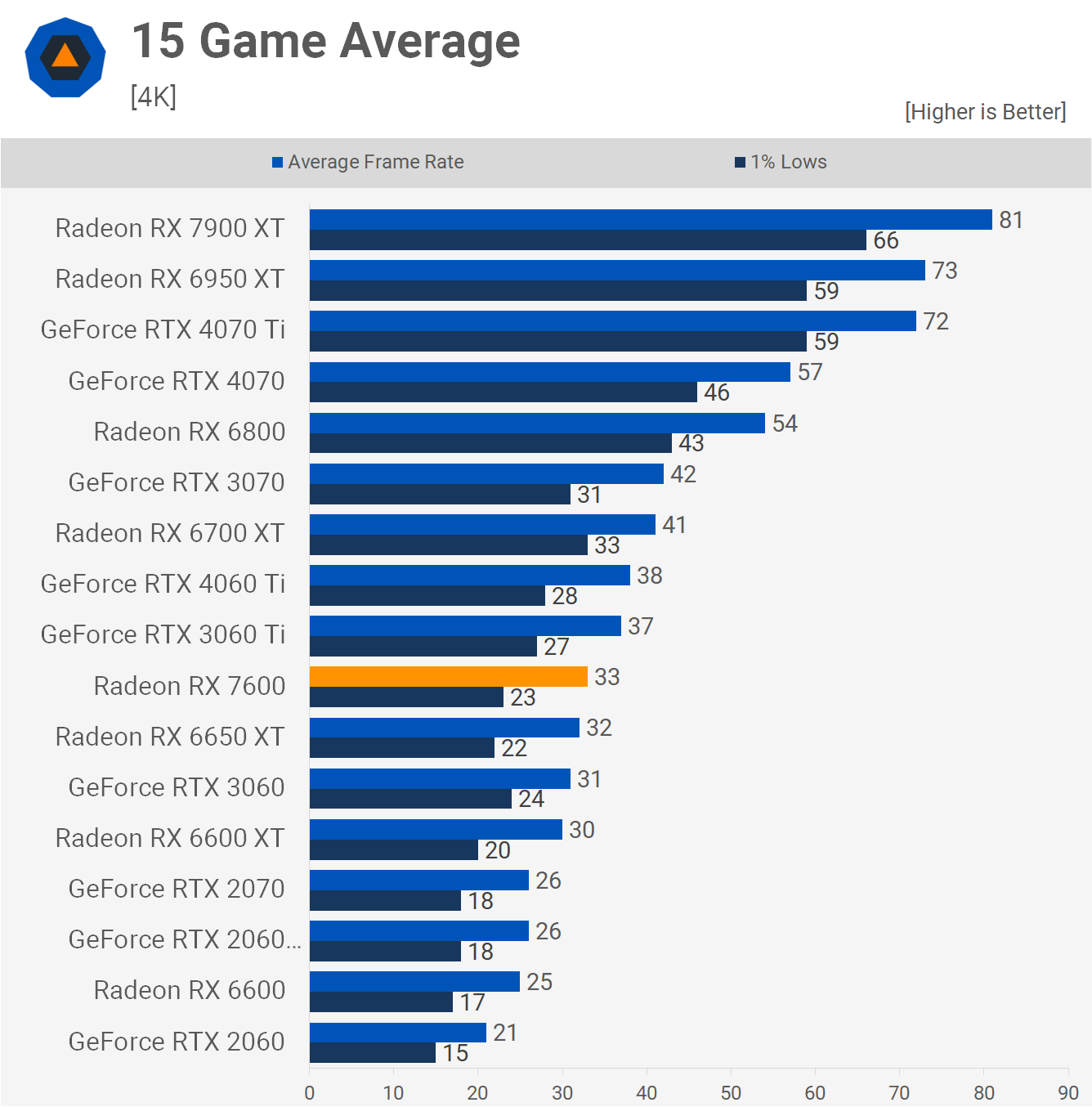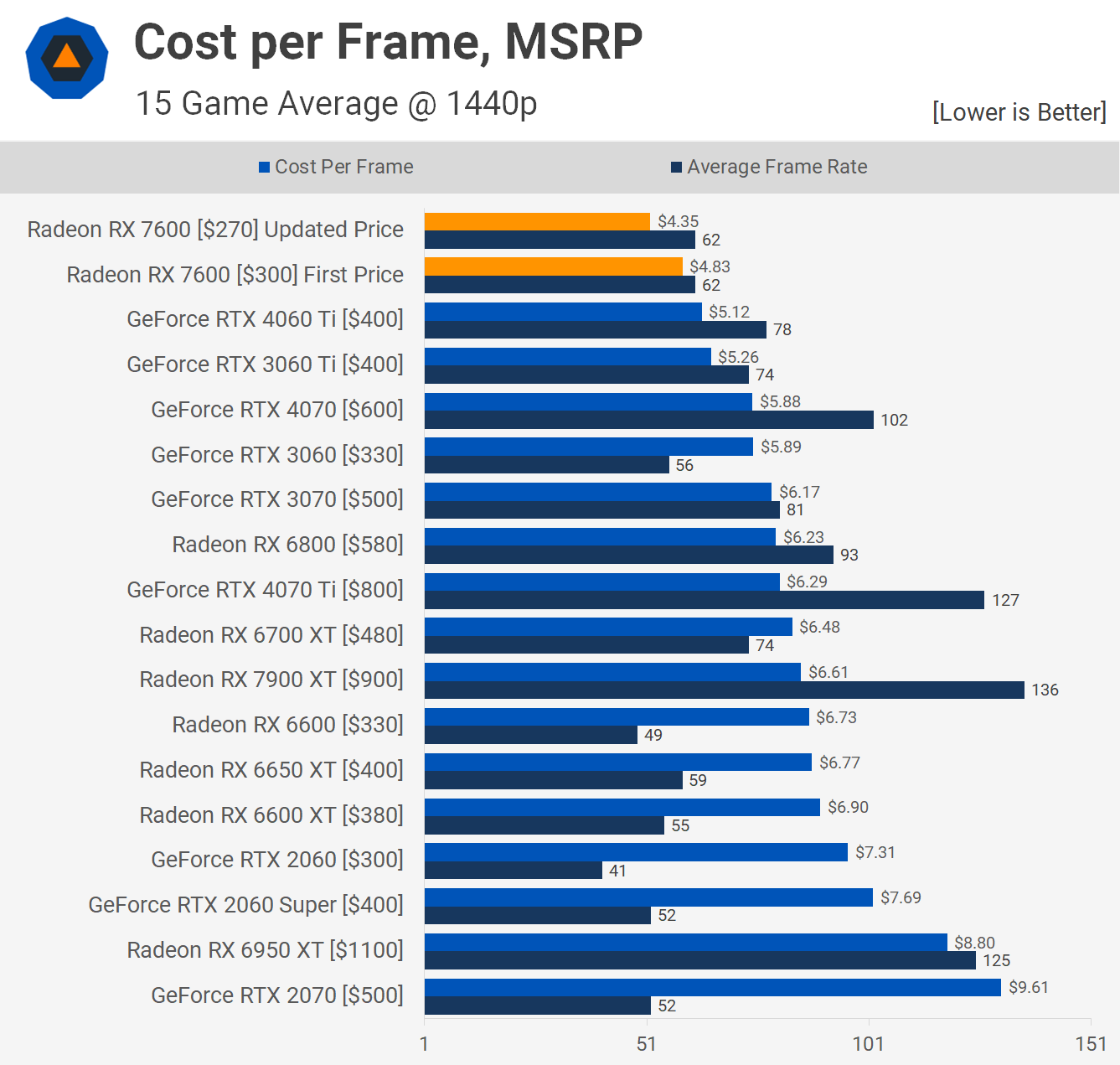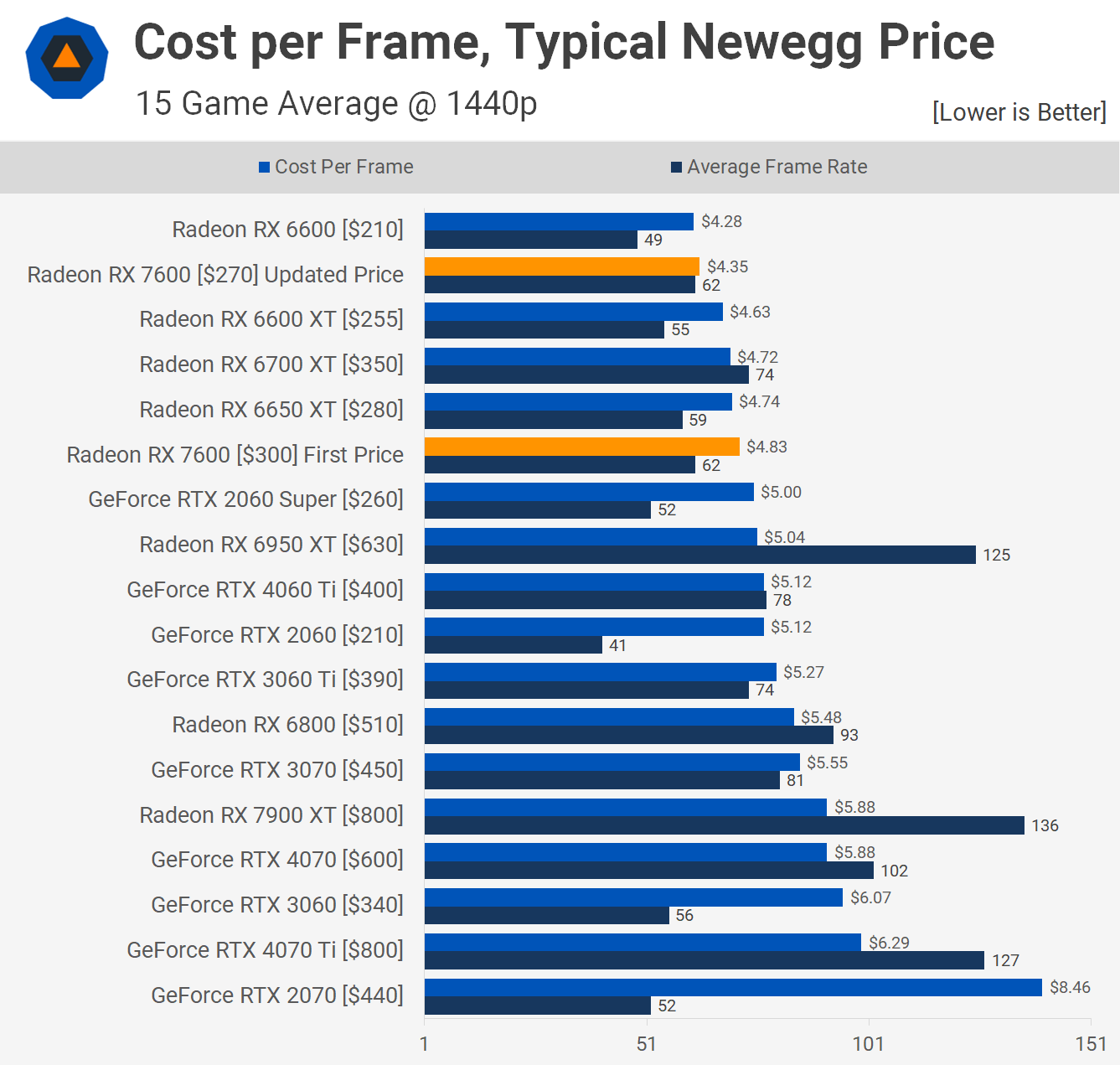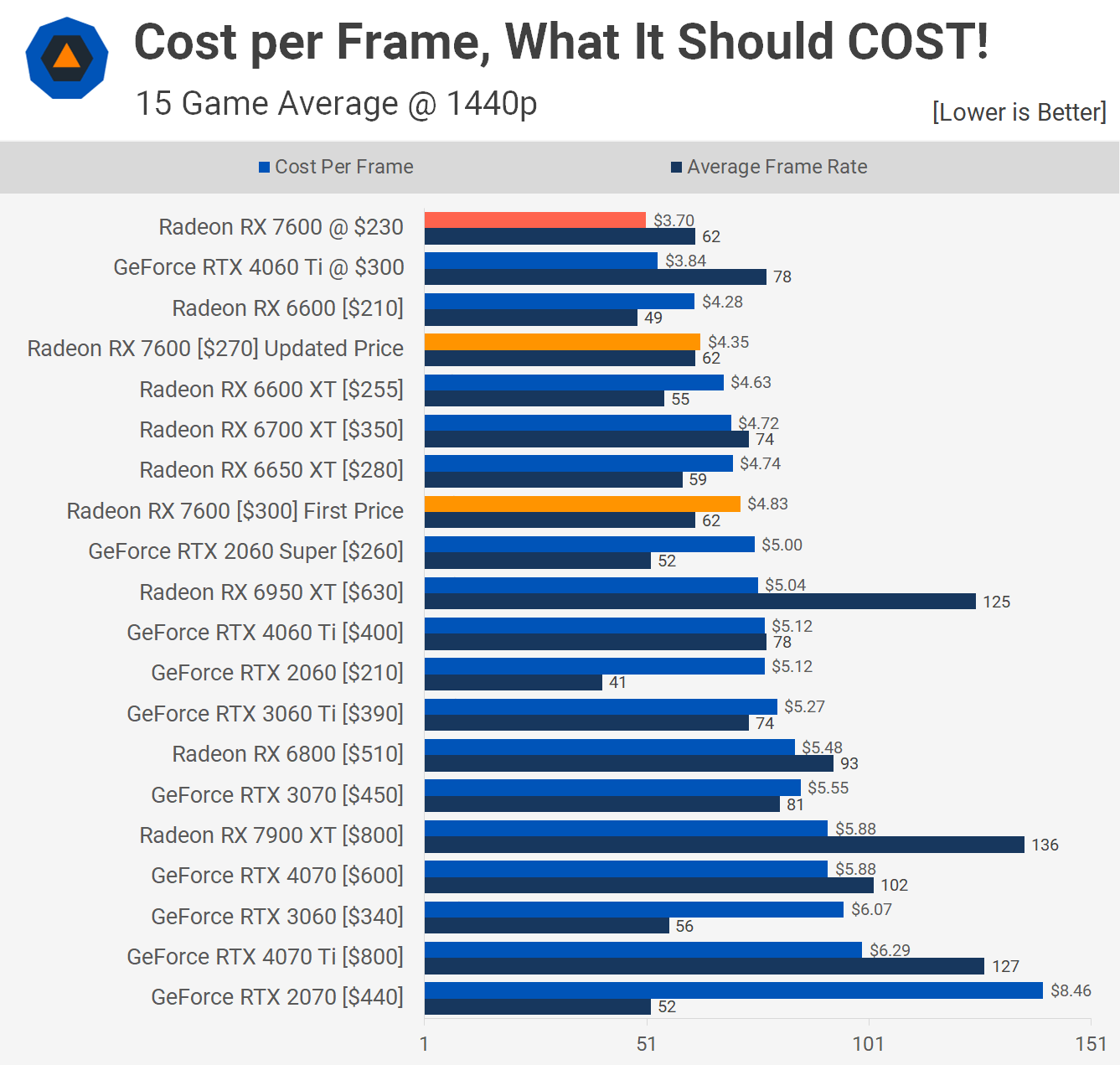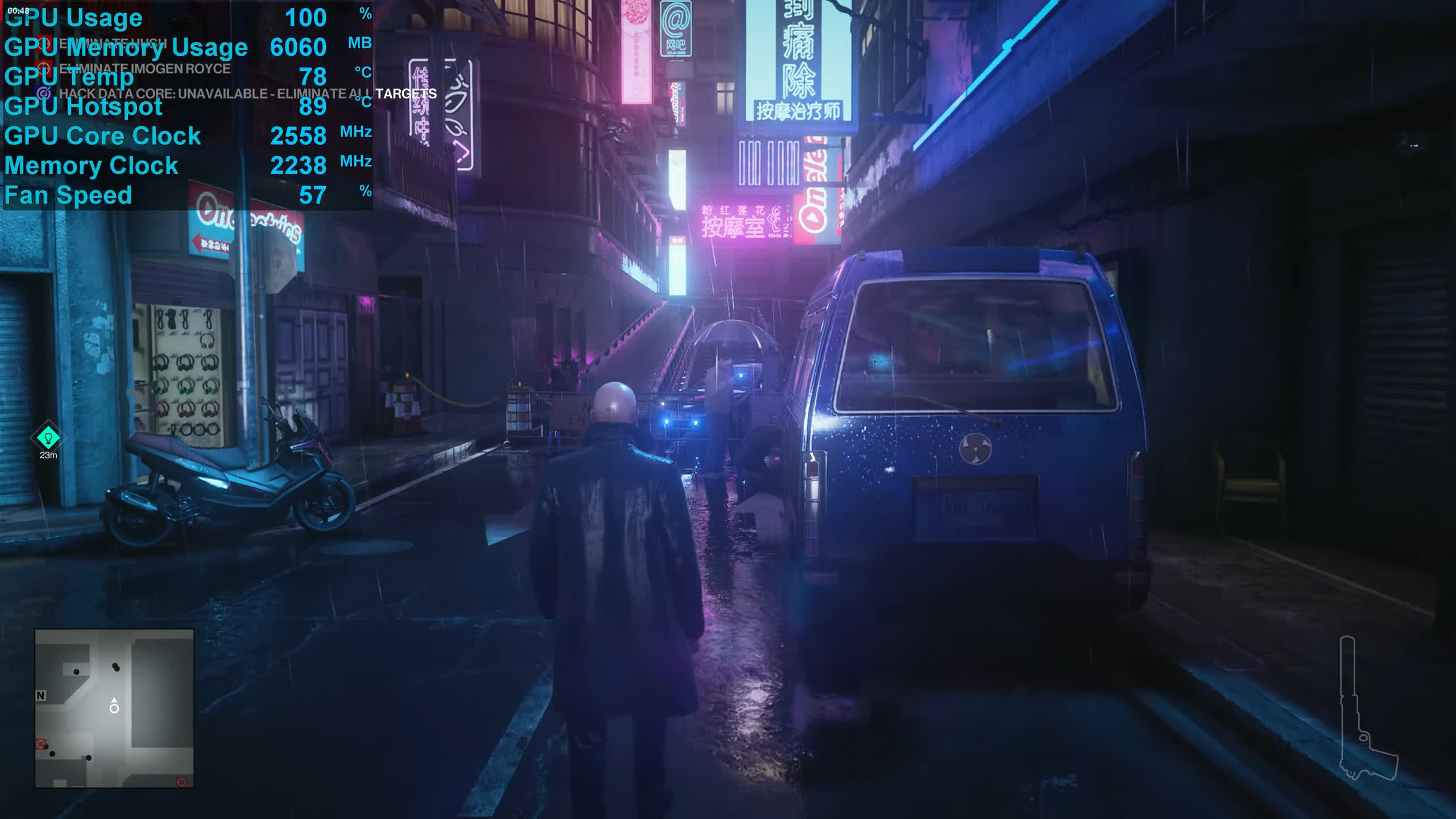AMD's new Radeon RX 7600 is a new mainstream GPU offering that is not unlike Nvidia's recent RTX 4060 Ti release – there's actually a decent product here, however it's poorly priced. Consequently, we've dug in to find out exactly what this new graphics card is worth and how much you should realistically pay for it.
Until just days before release, the Radeon RX 7600 was set to cost $300, and we had actually finished our review in which we thoroughly criticized it. Last week, AMD called us to inquire about our impressions of the RX 7600. We told them it was underwhelming and arguably, redundant. We advised them to lower the price to at least $250 or it wouldn't be worth releasing. We were certain that within a few months of release, we would see it priced at $250 or less.
We likely weren't the only reviewers to give them such feedback, prompting AMD to change the price at the last minute. This forced us to go back and make a few changes to our review. What makes matters a little frustrating though is that they only reduced the price by $30, down to $270, which still makes the 7600 a poorly priced product and very underwhelming.
AMD claims that the new $270 Radeon RX 7600 is designed for 1080p gameplay at high to ultra-high settings and that it provides an optimized 1080p gaming experience. We're going to challenge that claim. 8GB of VRAM is already suboptimal for some 1080p games today and certainly won't be sufficient a year or two from now, especially if the information coming out of game developers is anything to go by.
So, this is where we're at today: $270 GPUs still come with just 8GB of VRAM. But at least it's not a $400 GPU. What was Nvidia thinking with their pricing? As poor a value as the $400 RTX 4060 Ti is, the Radeon 7600 isn't significantly better. In terms of cost per frame, there's not a lot in it, but we'll delve into that later in the review.
The only saving grace for AMD here is the price, which isn't great, mind you, but it's better than $400. This is why we won't critique the RX 7600 nearly as harshly as we did the RTX 4060 Ti, which should afford the upcoming RTX 4060 some breathing room as well.
When it comes to features, the Radeon RX 7600 doesn't offer much over the RX 6600 series. The key advantage is AV1 encoding, along with DisplayPort 2.1 support for a maximum bandwidth of 54 Gbps, which is a 67% increase. That's a bonus, but other than that, it's all very familiar. Like the Radeon RX 6600, the 7600 utilizes a 128-bit wide memory bus using 8GB of GDDR6 memory, although the memory is clocked higher at 18 Gbps. However, this only increases the peak theoretical bandwidth by 16% when factoring in the Infinity Cache.
There's no need to go deeper into specifications. Let's move on to the results and then assess the kind of value this new Radeon GPU offers. For testing, the CPU used is the Ryzen 7 7800X3D, which has been paired with the Gigabyte X670E Aorus Master using 32GB of DDR5-6000 CL30 memory. We've tested at 1080p, 1440p, and 4K, although we'll focus on the 1080p and 1440p data for this review, as these are more realistic use cases for this 8GB GPU. All our benchmark data is fresh and updated for this review, so let's get into it…
Benchmarks
First up, we have Fortnite. Here, the Radeon RX 7600 managed an average of 90 fps at 1080p, which is comparable performance to several pre-existing products such as the RTX 3060, 2060 Super, and 6600 XT. This is a disappointing result. The RTX 3060 not only features more VRAM, but it also didn't cost significantly more when it was released over two years ago.
Worse still, the 6650 XT, which launched at an MSRP of $400 but has been priced below $300 for many months now, was actually faster than the new 7600.
At 1440p, we observe similar underwhelming results given the $270 price tag. We're looking at a mere 5% performance boost over the 6600 XT, which is very much in line with the performance of the RTX 3060/6650 XT.
Next, we have Resident Evil 4, and the results here are even more disappointing. At 1080p, the RX 7600 was slower than the 6600 XT and 15% slower than the 6650 XT, while it was just 10% faster than the RX 6600. It also fell considerably short of the RTX 3060, being almost 20% slower.
At 1440p, it managed to match the 6600 XT, but was still 8% slower than the 6650 XT and 17% slower than the RTX 3060. There isn't much to say about that, other than that it's very underwhelming and seems somewhat pointless. Nonetheless, let's move on in the hope that things might improve.
Performance in A Plague Tale: Requiem is certainly better. Here, we're looking at 6650 XT-like performance, 3% faster in fact, which also meant it was 26% faster than the RTX 3060. This result is more promising, but given the retail price of the 6650 XT, it probably won't have you rushing out to buy one.
The margin over the 6650 XT extends to 5% at 1440p, making the 7600 23% faster than the RTX 3060 and almost 30% faster than the RX 6600.
We've tested F1 22 using the ultra-high preset, which enables ray tracing by default, and this is the 7600's most significant advantage over the older RDNA 2 GPUs: improved RT performance. Here, the 7600 is 13% faster than the 6650 XT, 21% faster than the RTX 3060, and 35% faster than the RX 6600. While these results are pretty good, they're less exciting when considering the fact that the 7600 is set to cost over 40% more than the current asking price of the 6600, and both have 8GB's of VRAM.
The margins do improve at 1440p, with the 7600 delivering 6700 XT-like performance, which is impressive. It's also approximately 40% faster than the RX 6600, which helps justify the pricing discrepancy, at least for this title.
The RX 6600 also performs quite well in Cyberpunk 2077, falling just short of the 6700 XT by a 7% margin, while it outperforms the 6650 XT by 8% and the RX 6600 by 30%, which are decent results at 1080p.
The 1440p data is equally 'decent.' Here, the 6700 was 5% slower than the 6700 XT, 15% faster than the 6650 XT, and 41% faster than the RX 6600.
Moving on to Dying Light 2, the RX 7600 achieved 81 fps at 1080p, making it just 5% faster than the 6650 XT, 16% faster than the RTX 3060, and 27% faster than the RX 6600.
Similar results were observed at 1440p, with the 7600 being 4% faster than the 6650 XT and 27% faster than the RX 6600, averaging 52 fps.
In Watch Dogs: Legion, the RX 7600 rendered 121 fps on average, allowing it to match the performance of the RTX 3060 Ti, though it was still 15% slower than the 6700 XT. However, it was 4% faster than the 6650 XT, so we're basically observing 6650 XT-like performance.
The margins extend slightly at 1440p. Now, the 7600 is 6% faster than the 6650 XT, 22% faster than the RTX 3060, and 28% faster than the RX 6600.
In Forza Horizon 5, we observe 6600 XT-like performance at 1080p, which essentially matches the 6650 XT's performance. This isn't a fantastic result, and it means the 7600 is just 10% faster than the RTX 3060 and RX 6600.
The 1440p results aren't any better. Again, we see 6600 XT/6650 XT-like performance, resulting in only very minor gains over the RTX 3060 and RX 6600.
Total War: Warhammer III performed quite well on the RX 7600, achieving 84 fps at 1080p. While this meant it was 13% slower than the 6700 XT, it was still 12% faster than the RTX 3060 and 15% faster than the 6650 XT.
Increasing the resolution to 1440p reduced the margin over the RTX 3060 to just 4%, though it remained well ahead of the 6650 XT, with a 16% lead in this case.
The 7600 managed 123 fps in Spider-Man Remastered at 1080p, but this only put it alongside the 6650 XT and RTX 3060. Moreover, it only provided a 15% boost over the 6600.
The 1440p results are similar, with the 7600 being just 5% faster than the 6650 XT and 6% faster than the RX 3060.
In Hogwarts Legacy, the results are fairly typical, with the RX 7600 delivering 6650 XT-like performance. It's just slightly faster than the RTX 3060, and not significantly faster than the older RX 6600.
At 1440p, it's 28% faster than the RX 6600, which is decent, but again, it's 6650 XT-like performance.
The Halo Infinite results mirror the earlier ones, with the 7600 being just 5% faster than the 6650 XT at 1080p, indicating very similar performance to the 6650 XT.
The 7600 takes the lead over the 6650 XT at 1440p, but these results are somewhat skewed as the 7600 consistently had missing textures in this test. This is a common issue for all 8GB models, leading to inconsistent memory management and unreliable results.
The Last of Us poses problems for VRAM and 8GB graphics cards. At 1080p with ultra quality settings, the game appeared to render correctly, but frame time performance was noticeably worse for the 8GB cards. The RTX 3060, which has 12GB of VRAM, saw 1% lows nearly 40% greater than those of the 7600.
At 1440p, the 8GB graphics cards fail completely, but the 7600 isn't really powerful enough for this resolution anyway. You should be okay with the high-quality preset, but unfortunately, you won't be able to max out textures (which don't impact fps performance) if you have enough VRAM.
The RDNA 3 GPUs perform very well in Call of Duty: Modern Warfare II, and the RX 7600 is no exception. It produces an impressive 123 fps at 1080p, making it 8% faster than the 6700 XT and a substantial 21% faster than the 6650 XT.
Even at 1440p, it matches the RTX 3070, though that means it's just 7% faster than the 6650 XT. Therefore, memory bandwidth seems to be more of a concern at this higher resolution.
Lastly, we have Hitman 3. At 1080p, the RX 7600 averages 108 fps, which mirrors the 6650 XT-like performance.
The story is the same at 1440p, with 74 fps for the new 7600 compared to 71 fps for the 6650 XT. This represents a meager 4% improvement. Both models retail for approximately $300 and come equipped with just 8GB of memory.
Power Consumption
When it comes to power consumption, the RX 7600 isn't particularly impressive. It's not bad, it's just not something to get excited about - very much 6650 XT-like, in fact.
There's not much more to add here; the 7600 performed similarly to the 6650 XT in the tests, and the total system consumption was also much the same. There are no real efficiency improvements to highlight here.
15 Game Average
On average, across the 15 games tested at 1080p, the Radeon 7600 is just 4% faster than the 6650 XT. It's also 14-15% slower than the GeForce RTX 3060 Ti and Radeon RX 6700 XT. Compared to the RTX 3060, it has a mild 11% uplift, and a 24% boost over the Radeon RX 6600.
At 1440p, the Radeon 7600 is on average 5% faster than the 6650 XT, 13% faster than the 6600 XT, and 27% faster than the RX 6600. Compared to the GeForce RTX 3060, you're getting an average of 11% more performance, though 1% lows were slightly worse due to the small VRAM buffer.
The 7600 isn't intended for 4K gaming, but the data is below for those who are interested.
Cost Per Frame: MSRP
At the suggested retail price (MSRP) of $270, the Radeon 7600 could be the best value GPU we've seen in the past few years. If all products were selling at their MSRP, the 7600 would be a solid offering, reducing the cost per frame from the Radeon RX 6600 by 35%.
That's a significant generational uplift. However, even when compared to the RTX 3060, we're still looking at a 26% reduction in cost per frame.
Cost Per Frame: Newegg
The problem for the Radeon 7600 is that Radeon 6000 series GPUs have been selling well below their MSRP for almost a year now. The Radeon 6600 could be had for $220 nine months ago. Similarly, the Radeon 6700 XT, which is not only faster than the RX 7600 but also packs 50% more VRAM, hit $350 last year and can now be purchased for as little as $320.
The Radeon 7600, for $270, is hard to justify when the 6650 XT or 6600 XT offer a similar level of performance, similar power efficiency, and the same amount of VRAM for basically the same price. These GPUs have been available at this price point since October 2022.
Cost Per Frame: What It Should Cost
So how much should it cost? We believe that the RTX 4060 Ti which was also released this week should have been priced no more than $300, and by that logic, AMD should not ask more than $230 for the Radeon 7600. We advise waiting and watching for inevitable price drops over the next few months.
Temps and Clocks
Here's a quick look at how the AMD reference card performs after an hour of load in an enclosed case playing Hitman 3 at 1440p. The average GPU temperature peaked at 78°C with a peak hotspot temperature of 90°C. The fan reached speeds of 1600 RPM to achieve these temperatures. The core clock typically ran at 2560 MHz, while the memory operated at the expected 18 Gbps.
Radeon or GeForce on the Mainstream?
Just like the GeForce RTX 4060 Ti that we reviewed this week, we cannot recommend purchasing the Radeon RX 7600 at the launch price of $270. It simply doesn't do enough to warrant that asking price, especially when the same gaming experience could have been purchased for around the same cost as far back as late last year.
It's disappointing to conclude another Radeon review with a thumbs-down, primarily due to its price. Furthermore, it's almost guaranteed that this card will be available for $250 or less within a matter of months.
This seems to be AMD's new favorite tactic – ask a high price for an underwhelming product, receive mostly negative reviews that tarnish the product's reputation and the company's image, then reduce the price just months after release. This was most recently demonstrated by the Radeon 7900 XT.
If AMD indeed reduces the RX 7600's price to $250 (or less) within months of this review, they need to rethink their strategy. That said, perhaps maximizing short-term profits at the expense of early adopters or less-informed consumers is worth the negative reviews and brand perception. Surely AMD knows what it's doing, right?
Regarding the 8GB VRAM discussion, it's our opinion that products priced over $250 should have at least 12GB of VRAM. While an increase in VRAM would need a different GPU configuration, this is something they'd have to account for when planning the lineup.
Moving forward, 8GB is quickly becoming entry-level. Most consumers won't want to pay more than $250, perhaps even $200, for an 8GB graphics card. AMD even recommends manually reducing textures on the Radeon 7600 at 1080p. While such compromises are more acceptable on lower-end models, 8GB is becoming less acceptable at a $270 price point, and our readers appear to agree.
Texture quality significantly impacts visuals and is much more important than features like ray tracing. As long as there's enough VRAM, textures won't affect FPS performance. This means products like the Radeon RX 6800 might be limited to medium-quality settings in AAA titles released a year or two from now. However, you'll still be able to max out texture options in those games, resulting in stunning, photo-realistic textures.

In future games, the 16GB version of the RTX 4060 Ti will be able to achieve a much higher level of graphical fidelity than the 8GB model, while maintaining the same FPS.
As it stands, despite AMD's last-minute price adjustment, the Radeon RX 7600 is overpriced and therefore underwhelming. If you're looking for a graphics card around $300, the Radeon 6700 XT is a much better purchase, unless you specifically require AV1 encoding support. We look forward to recommending the RX 7600 in the near future, after AMD makes another price adjustment.
Shopping Shortcuts:
- AMD Radeon RX 7900 XT on Amazon
- AMD Radeon RX 6700 XT on Amazon
- AMD Radeon RX 7600 on Amazon
- Nvidia GeForce RTX 4070 on Amazon
- Nvidia GeForce RTX 4070 Ti on Amazon
- Nvidia GeForce RTX 4090 on Amazon
- AMD Ryzen 7 7800X3D on Amazon
Further Testing
Since we published this day-one review of the Radeon RX 7600, we have run additional benchmarks and comparisons you may be interested in:





